Trending News
16 October, 2024
6.31°C New York

One of Nvidia’s fundamental breakthroughs has involved processors that power detailed, compute-intensive graphical simulations that can be used for everything from games and industrial development to AI training. Now, two of the engineers who helped build those physical simulations for Nvidia have raised a sizable amount of seed funding for their new startup.
Manchester-based Vsim is developing a new physics simulation framework, and has raised $21.5 million from EQT Ventures and a number of backers. Vsim had previously raised around $1.4 million, bringing its total funding raised to $24 million. This latest investment has been rumored for a bit and values the company at around $100 million valuation.
Factorial Fund, Samsung Next, Tru Arrow, Xora (a Temasek subsidiary), IQ Capital, Koro Capital, Concept Ventures, Lakestar Scout Fund and Carles Reina also participated in the round.
Vsim has been operating in stealth so far, so there is not a lot of evidence of its product just yet. Michelle Lu, who co-founded the startup with Kier Storey, told TechCrunch that they are initially targeting opportunities in robotics training.
However, the tech might be able to do far more than that. One of the key reasons why Vsim has raised a bigger-than-usual seed round is because what it is building has the potential to be used for a lot more.
While simulation technology has been around for years, improvements in processing power are leading to more efficient algorithms, as well as tooling aimed at more specific applications — that’s the opportunity Vsim is targeting.
Lu and Storey are not just the co-founders of Vsim; they are also a couple and have been working side-by-side for nearly two decades, going back to their days as physics students at Newcastle University.
The pair’s first foray into startup life was a short-lived effort when they were fresh out of their PhD program. That company might have had the right talent and ideas but it came at the wrong time, and maybe the wrong place, too: It was 2007, and there was little money to be raised for startups building simulation technology in Northern England, even from promising PhDs.
So the two moved to a new pair of jobs, working for Bizarre Creations, a game studio based out of Manchester. Bizarre found some success and was acquired by Activision, and there they built physics engines for a number of titles. Activision eventually shut down Bizarre and the pair moved to Nvidia, where they worked as engineers focusing on building simulation technology for more than a decade.
Lu said that she and Storey have honed in on simulations for robotics as the first use-case because of a gap in the market: While robots have existed for years now, particularly in industrial settings, they now seem to be at an inflection point thanks to advances in processing, mechanics and AI.
“Back then, we were just some PhD graduates,” Lu said of their early efforts. “Now we have 20 years of experience and have talked to a lot of potential customers. That’s how we have found the target for our product.”
While companies like Nvidia are also building robotics simulations — the founders were doing a lot of work on exactly that at Nvidia — what Vsim is building takes that tech to a new level.
“The reason we’re excited about simulation is that it’s fundamental to a lot of different sectors, ranging from research to entertainment to manufacturing, pharma and robotics,” Sandra Malmberg, the partner at EQT Ventures who led the round, said in an interview.
Simulation tools today are built for a world with a limited degree of freedom and for fixed environments, but as ambitions for applications grow, robots (and other autonomous machines) will need to make decisions in real time and in the real world, which is dynamic and unpredictable.
“There is no simulation platform for that today,” Malmberg said. “This calls for a high-performance simulation where you can act with speed, in real time, with accuracy, taking the room and the world into consideration. And this is what Vsim is building. They can enable robots initially, and later, they will do more.”

A relatively new startup called EvolutionaryScale has secured a massive tranche of cash to build AI models that can generate novel proteins for scientific research.
EvolutionaryScale on Tuesday said it has raised $142 million in a seed round led by ex-GitHub CEO Nat Friedman, Daniel Gross and Lux Capital, with participation from Amazon and NVentures, Nvidia’s corporate venture arm. The startup also released ESM3, an AI model it describes as a “frontier model” for biology — one that can create proteins for use in drug discovery and materials science.
“ESM3 takes a step toward a future of biology where AI is a tool to engineer from first principles, the way we engineer structures, machines, and microchips and write computer programs,” EvolutionaryScale’s co-founder and chief scientist, Alexander Rives, said in a statement.
Rives, along with Tom Sercu and Sal Candido, began developing generative AI models to explore proteins while at Meta’s AI research lab, FAIR, in 2019. After their team was disbanded, Rives, Sercu and Candido left Meta to continue building on the work they’d started.
Characterizing proteins can reveal the mechanisms of a disease, including ways to slow it or reverse it, while creating proteins can lead to entirely new classes of drugs, tools and therapeutics. But the current process for designing proteins in the lab is costly, both from a computational and human resource standpoint.
Designing a protein entails coming up with a structure that could plausibly perform a task inside the body or a product, then finding a protein sequence — the sequence of amino acids that make up a protein — likely to “fold” into the structure. Proteins must correctly fold into three-dimensional shapes in order to carry out their intended function.
Trained on a dataset of 2.78 billion proteins, ESM3 can “reason over” the sequence, structure and function of proteins, Rives says, enabling the model to generate new proteins — à la Google DeepMind’s AlphaFold. EvolutionaryScale is making the full 98-billion-parameter model available for non-commercial use through its cloud Forge developer platform as well as releasing a smaller version of the model for offline use.
EvolutionaryScale claims that it used ESM3 to generate a new variant of green fluorescent protein (GFP), which is responsible for the glowing of jellyfish and luminescent colors in coral. A preprint paper on the company’s website details its work.

“We’ve been working on this for a long time, and we’re excited to share it with the scientific community and see what they do with it,” Rives said.
EvolutionaryScale isn’t a charity, of course. The company, which employs roughly 20 people, told TechCrunch that it plans to make money through a combination of partnerships, usage fees and revenue sharing. EvolutionaryScale might work with pharmaceutical companies to integrate ESM3 into their workflows, for example, or revenue-share with researchers for breakthrough discoveries commercialized using ESM3.
To this end, EvolutionaryScale says that it will soon bring ESM3 and its derivatives to select AWS customers via the cloud provider’s SageMaker AI dev platform, the Bedrock AI platform and HealthOmics service. ESM3 will also be available to select customers using Nvidia’s NIM microservices, supported with an Nvidia enterprise software license.
EvolutionaryScale says that both AWS and Nvidia customers will be able to fine-tune ESM3 using their own data.
It could be a while before EvolutionaryScale turns a profit. In the company’s pitch deck, a copy of which Forbes managed to obtain last August, EvolutionaryScale repeatedly emphasized that it could take a decade for generative AI models to help design therapies. The firm will also have to fend off competition from DeepMind’s spin-off, Isomorphic Labs, which already has contracts with big pharma companies, as well as Insitro, publicly traded Recursion and Inceptive.
EvolutionaryScale’s big bet is scaling up its model training to incorporate data beyond proteins and create a general-purpose AI model for biotech applications.
“The incredible pace of new AI advances is being driven by increasingly large models, increasingly large datasets and increasing computational power,” an EvolutionaryScale spokesperson said. “The same holds true in biology. In research over the last five years, the ESM team has explored scaling in biology. We find that as language models scale, they develop an understanding of the underlying principles of biology, and discover biological structure and function.”
All that sounds wildly ambitious to this reporter, but having deep-pocketed investors is surely going to help.

A relatively new startup called EvolutionaryScale has secured a massive tranche of cash to build AI models that can generate novel proteins for scientific research.
EvolutionaryScale on Tuesday said it has raised $142 million in a seed round led by ex-GitHub CEO Nat Friedman, Daniel Gross and Lux Capital, with participation from Amazon and NVentures, Nvidia’s corporate venture arm. The startup also released ESM3, an AI model it describes as a “frontier model” for biology — one that can create proteins for use in drug discovery and materials science.
“ESM3 takes a step toward a future of biology where AI is a tool to engineer from first principles, the way we engineer structures, machines, and microchips and write computer programs,” EvolutionaryScale’s co-founder and chief scientist, Alexander Rives, said in a statement.
Rives, along with Tom Sercu and Sal Candido, began developing generative AI models to explore proteins while at Meta’s AI research lab, FAIR, in 2019. After their team was disbanded, Rives, Sercu and Candido left Meta to continue building on the work they’d started.
Characterizing proteins can reveal the mechanisms of a disease, including ways to slow it or reverse it, while creating proteins can lead to entirely new classes of drugs, tools and therapeutics. But the current process for designing proteins in the lab is costly, both from a computational and human resource standpoint.
Designing a protein entails coming up with a structure that could plausibly perform a task inside the body or a product, then finding a protein sequence — the sequence of amino acids that make up a protein — likely to “fold” into the structure. Proteins must correctly fold into three-dimensional shapes in order to carry out their intended function.
Trained on a dataset of 2.78 billion proteins, ESM3 can “reason over” the sequence, structure and function of proteins, Rives says, enabling the model to generate new proteins — à la Google DeepMind’s AlphaFold. EvolutionaryScale is making the full 98-billion-parameter model available for non-commercial use through its cloud Forge developer platform as well as releasing a smaller version of the model for offline use.
EvolutionaryScale claims that it used ESM3 to generate a new variant of green fluorescent protein (GFP), which is responsible for the glowing of jellyfish and luminescent colors in coral. A preprint paper on the company’s website details its work.

“We’ve been working on this for a long time, and we’re excited to share it with the scientific community and see what they do with it,” Rives said.
EvolutionaryScale isn’t a charity, of course. The company, which employs roughly 20 people, told TechCrunch that it plans to make money through a combination of partnerships, usage fees and revenue sharing. EvolutionaryScale might work with pharmaceutical companies to integrate ESM3 into their workflows, for example, or revenue-share with researchers for breakthrough discoveries commercialized using ESM3.
To this end, EvolutionaryScale says that it will soon bring ESM3 and its derivatives to select AWS customers via the cloud provider’s SageMaker AI dev platform, the Bedrock AI platform and HealthOmics service. ESM3 will also be available to select customers using Nvidia’s NIM microservices, supported with an Nvidia enterprise software license.
EvolutionaryScale says that both AWS and Nvidia customers will be able to fine-tune ESM3 using their own data.
It could be a while before EvolutionaryScale turns a profit. In the company’s pitch deck, a copy of which Forbes managed to obtain last August, EvolutionaryScale repeatedly emphasized that it could take a decade for generative AI models to help design therapies. The firm will also have to fend off competition from DeepMind’s spin-off, Isomorphic Labs, which already has contracts with big pharma companies, as well as Insitro, publicly traded Recursion and Inceptive.
EvolutionaryScale’s big bet is scaling up its model training to incorporate data beyond proteins and create a general-purpose AI model for biotech applications.
“The incredible pace of new AI advances is being driven by increasingly large models, increasingly large datasets and increasing computational power,” an EvolutionaryScale spokesperson said. “The same holds true in biology. In research over the last five years, the ESM team has explored scaling in biology. We find that as language models scale, they develop an understanding of the underlying principles of biology, and discover biological structure and function.”
All that sounds wildly ambitious to this reporter, but having deep-pocketed investors is surely going to help.

CES 2024 is here! The TechCrunch team is in Las Vegas this week to take in all of the action and decipher what it means to you. You already know what we’re expecting, so sit back, relax and stay tuned throughout the week as we bring you the products, announcements and startup news that you need to know.
Kicking off the first day were some bigger announcements from companies, including Nvidia, LG, Sony and Samsung. Those livestreams have ended, but you can watch most of their archives and catch up right here. And with the event still ongoing, and the show floor open, here’s how you can follow along with our team’s coverage.
Or, to dive into each day’s updates directly, you can follow these links:
ThursdayWednesdayTuesdayMonday
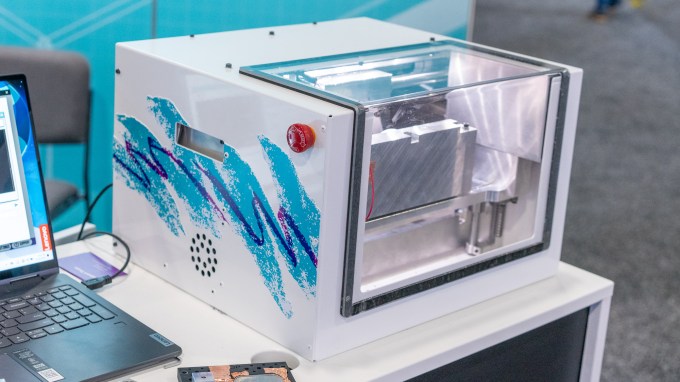
Earlier in the week, Haje Jan Kamps took a closer look at Rownd. Then he found Coast Runner, a new entrant in the desktop CNC milling industry. This company, Haje writes, is promising to make the technology accessible to everyone, from professionals to hobbyists and is breaking down the barriers of traditional CNC milling with a focus on power, compact size and, most importantly, education.
In today’s Equity, Alex Wilhelm and Mary Ann Azevedo are joined by Kirsten Korosec and Haje Jan Kamps to discuss, among other things, some of the cool stuff that came out of CES, including this Bane-style mask, ChatGPT in cars and eVTOLs.
Haje Jan Kamps is taking another look at 444, a smart pepper spray startup he had written about at CES 2023. 444, he writes, is back again, now with a Mace partnership under its belt and about to start manufacturing.
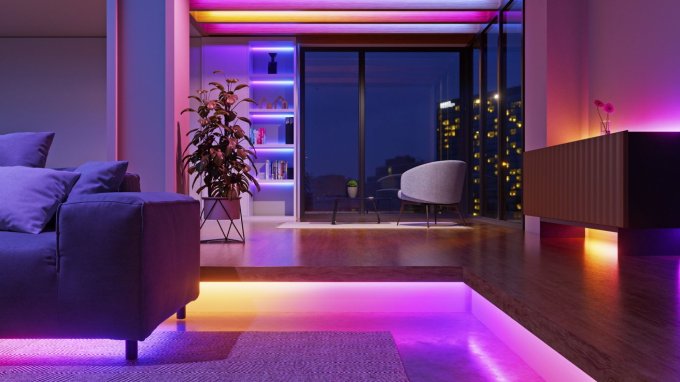
With all of the collaboration — and CES announcements — between top electronic companies to get Matter, the smart home networking protocol, off the ground, 2024 could be Matter’s best year yet. Kyle Wiggers has a list of the devices to show us why.

After seeing all the examples of artificial intelligence baked into the booths of CES, Devin Coldewey put together a list of gadgets, products and software he thought actually might do some good.
Also, Haje Jan Kamps writes about the MMGuardian, a smartphone produced in collaboration with Samsung that’s tapping into the power of AI to make phone use safer for kids and teenagers.
Harri Weber and Sean O’Kane discuss the examples of hydrogen-power vehicles (TechCrunch+ gets into that too) on the CES floor and why it’s now a popular alternative energy after previously fizzling out. Or, they write, “is it yet another example of companies making promises at CES that they won’t be able to keep?”
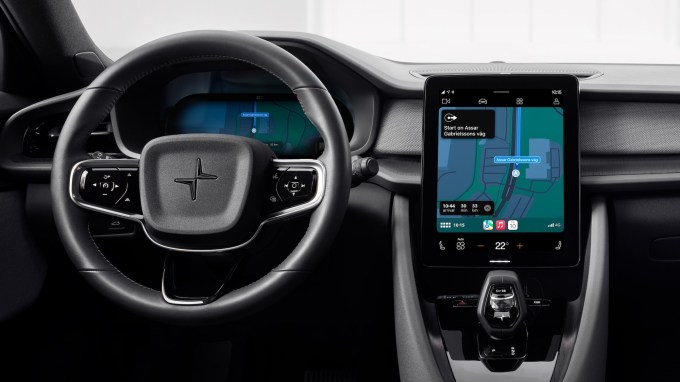
Kirsten Korosec caught up with Polestar CEO Thomas Ingenlath who discussed the integration of the Google built-in, a branded product that embeds Google apps and services directly into the company’s EVs. Don’t worry, Ingenlath says the EV maker isn’t dropping Android Auto or Apple CarPlay as a result.
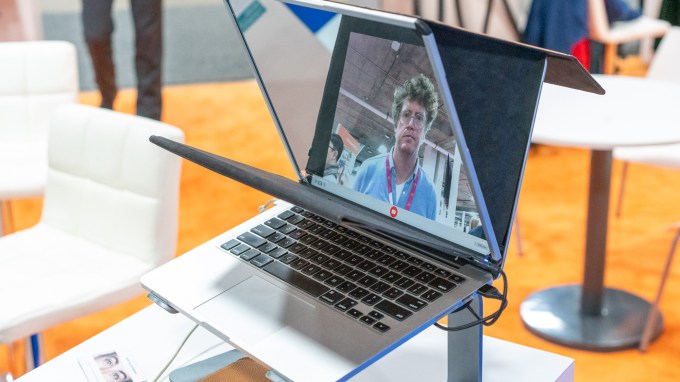
With cameras in different places, it’s often difficult to maintain eye contact with someone on video calls. There is AI for that, however, one company is taking a different approach. EyeQ is developing a device that attaches to your laptop and, through the use of a mirror, enables you to maintain eye contact with the person you’re speaking to, even while looking at your screen.
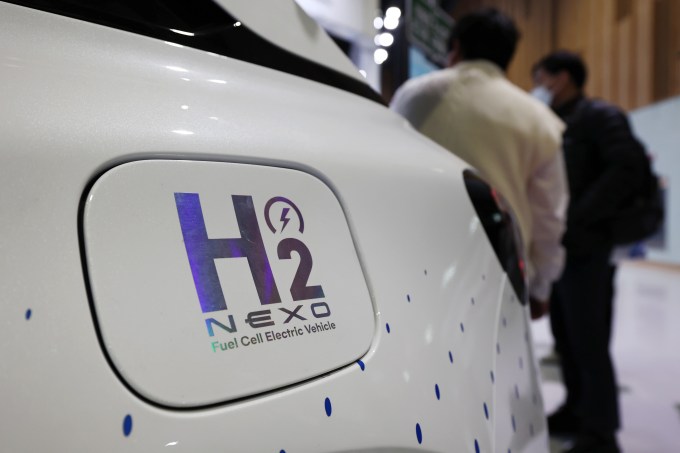
As Tim De Chant notes, Hyundai has invested in hydrogen fuel cells for decades, but it has also been one of the more successful legacy automakers at navigating the electric transition. So it’s odd now that a company with so much momentum on its side would throw a hydrogen Hail Mary at CES.
Meanwhile, Haje Jan Kamps had a lot of time to contemplate how Siri works while driving to Las Vegas. He shares some areas where Apple’s voice assistant, Siri, is being left in the dust by its competitors.

Whispp is working to change the game for individuals with speech disorders and voice disabilities, bringing voice boxes into the current millennium with its groundbreaking AI-powered assistive speech and phone-calling app. The company launched its newest phone-calling feature that converts whispered and vocal cord-impaired speech into a user’s natural voice in real time.
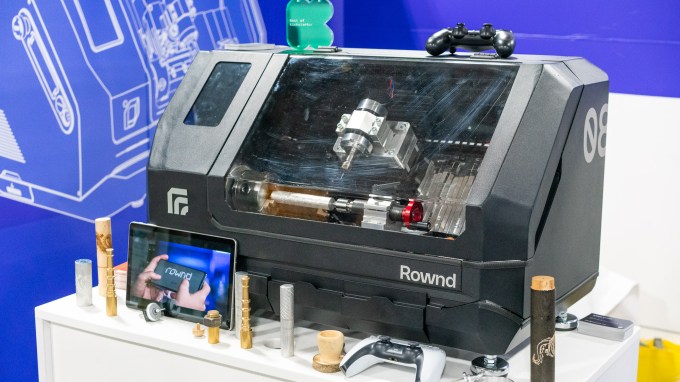
Haje Jan Kamps was keeping tabs on Rownd’s new tabletop CNC lathe and got to see it in action this week. He writes that what sets Rownd Lathe apart is not just its relatively affordable hardware (the machine retails at around $5k) but the accompanying software that democratizes the design process, enabling beginners to easily create or utilize pre-made designs from the open-source Rownd Library. Watch it craft a chess pawn.

Devin Coldewey found what Zoe Care was doing in the area of fall detection and elderly autonomy interesting. The company uses existing Wi-Fi signals (and the way our bodies change how Wi-Fi reception works) to detect humans and their activities.
Unlike the Serenity desktop fall detection network we discussed earlier this week, Zoe’s device doubles as a smart plug, and uses a sensor to gather and analyze Wi-Fi signals. If a fall is detected, these signals are translated into alerts on a mobile application. Covering up to 800 sq. ft., just one device can secure multiple rooms or even an entire floor, making it an efficient, cost-effective solution.

That’s the question Harri Weber set out to answer after hearing the phrase uttered all over the CES floor. In it’s most simplest definition, it’s a vehicle defined by software. However, as Harri spoke with various experts, we learn the term can mean various things. Go inside the journey to find out why this is such a popular automotive buzzword.

One thing is consistent throughout every CES: weird and unexpected gadgets and gizmos appear from unexpected places. We have a rundown of some of the most noteworthy products and services here, which include expensive binoculars with birdwatching AI, voice-absorbing muzzles, pay-as-you-go bathroom access and a router that tries to fit your aesthetic.
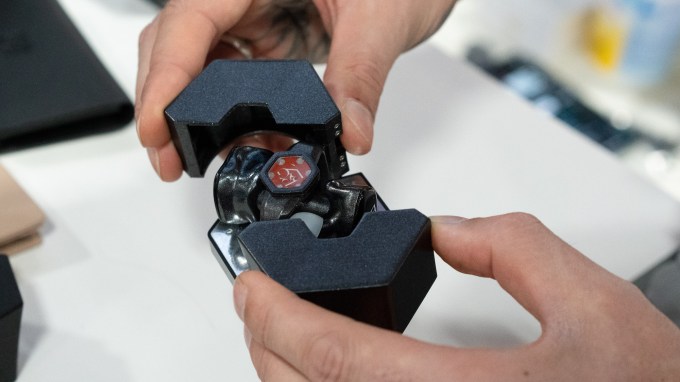
Beyond the outright strange products and platforms, there are some hidden gems amid the big booths and name brands at CES. Our own Haje Jan Kamps has highlighted several already that stand out from the crowd. He gave Breggz’s $2,000 earbuds a listen and discovered they actually deliver on their price point for audio perfectionists. He took a look at Augmental’s impressive ambitions to create accessible interfaces that can accommodate for voiceless communication. And he explored Nowatch’s purposeful fitness tracker that uses AI to keep you aware of your health goals without overly stressing you out.
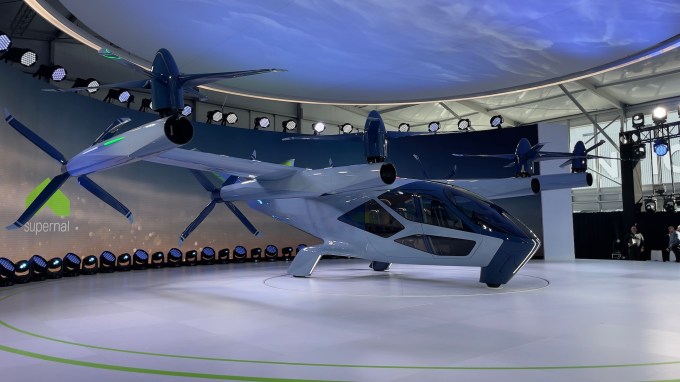
Supernal’s electric vertical takeoff and landing (eVTOL) aircraft got a showcase from its parent company Hyundai Motor Group on the ground in Las Vegas, as the so-named S-A2 moves closer to its planned 2028 launch for shuttling passengers. Head here for a full rundown on the aircraft, and the challenges in expanding airborne mobility.
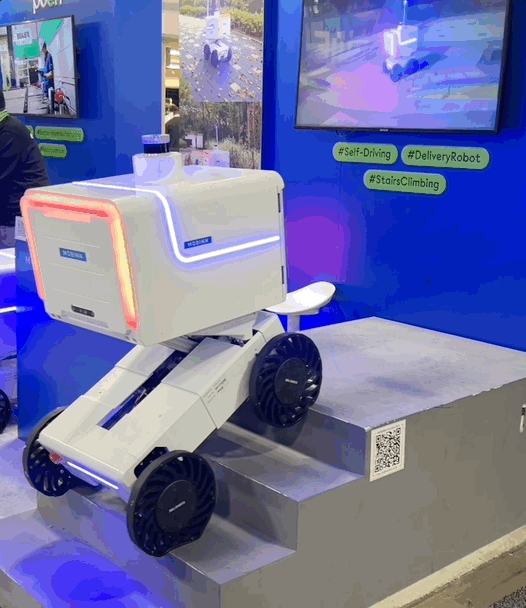
Mobinn, a new spinoff from Hyundai, is taking to CES to show off how its new delivery robot can use its flexible wheels to navigate stairs and changes in elevation to drop off deliveries, with tests already being conducted in Korea. Climb aboard the full story here.
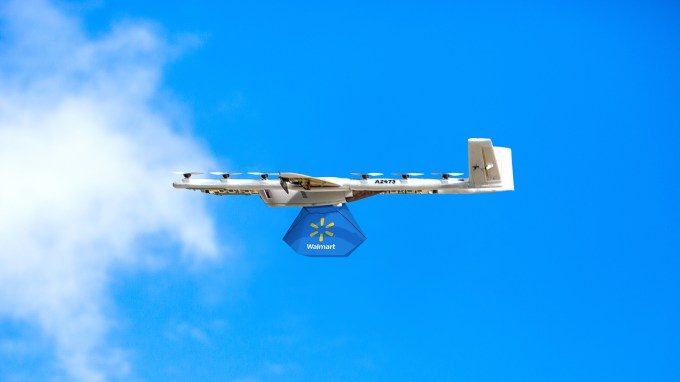
Walmart president and CEO Doug McMillon shared some new technologies the retail giant has been working on, including augmented reality (AR), drones, generative artificial intelligence, and other AI tech meant to improve the shopping experience for customers. Within the presentation were some new tools for managing product search and replenishment and a new beta AR social commerce platform called “Shop with Friends.” Get the scoop on all of the new products.
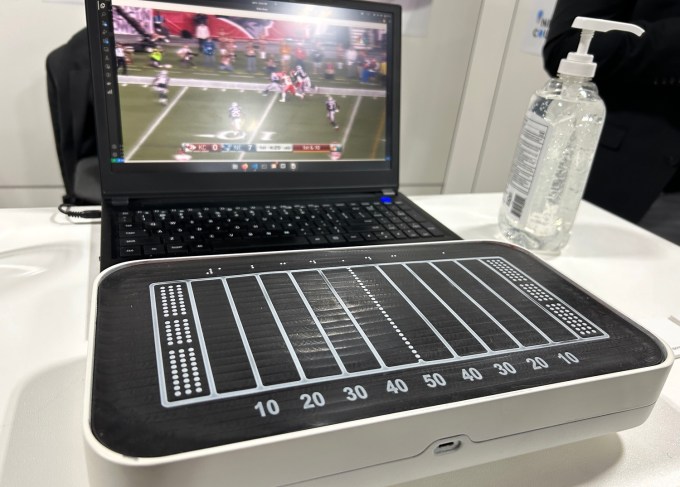
Put this in one in the “thoughtful” category. OneCourt, a startup founded by recent University of Washington graduates, debuted a lap-top miniature field that enables someone who is blind or with low vision feel the position of sports players and the ball in near real time. The OneCourt team takes this information and transmits it to a haptic display with a touchable cover imitating the pitch or field lines. See how it works.
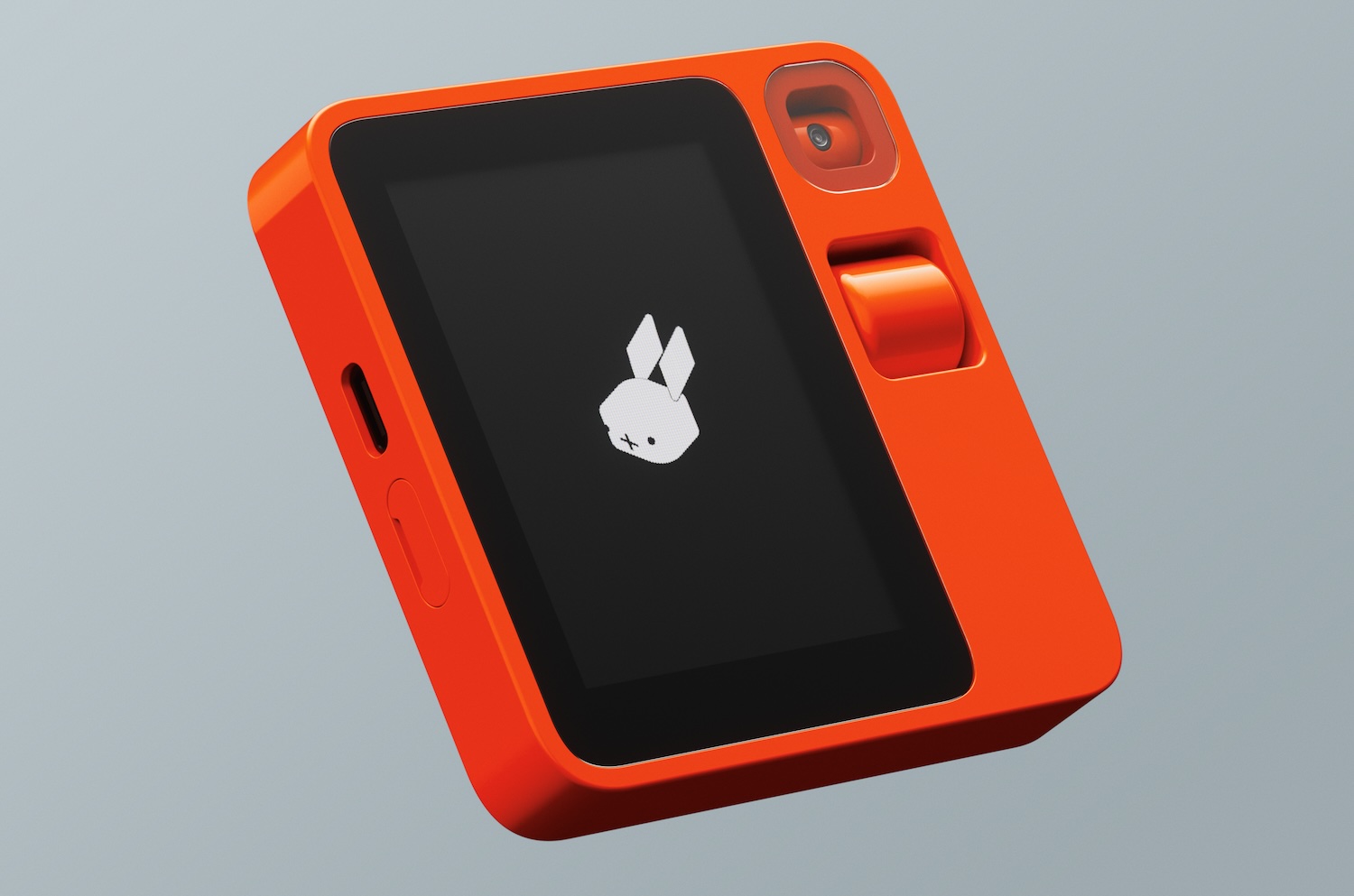
Devin writes that the idea behind the $200 rabbit r1 is simple: “it lets you keep your phone in your pocket when you need to do some simple task like ordering a car to your location, looking up a few places to eat where you’re meeting friends, or finding some lodging options for a weekend on the coast. Instead of pulling out your phone, unlocking it, finding the app, opening it, and working your way through the UI (so laborious!), you pull out the r1 instead and give it a command in natural language.” Now hop over to the story for more.
Move over, Siri. The rabbit r1 is a pocket AI assistant that can navigate your apps for you, without you having to pick up your phone.
Check out our preview from #CES2024: https://t.co/R6naLv9ckH pic.twitter.com/aUbz0WW1xI
— TechCrunch (@TechCrunch) January 9, 2024
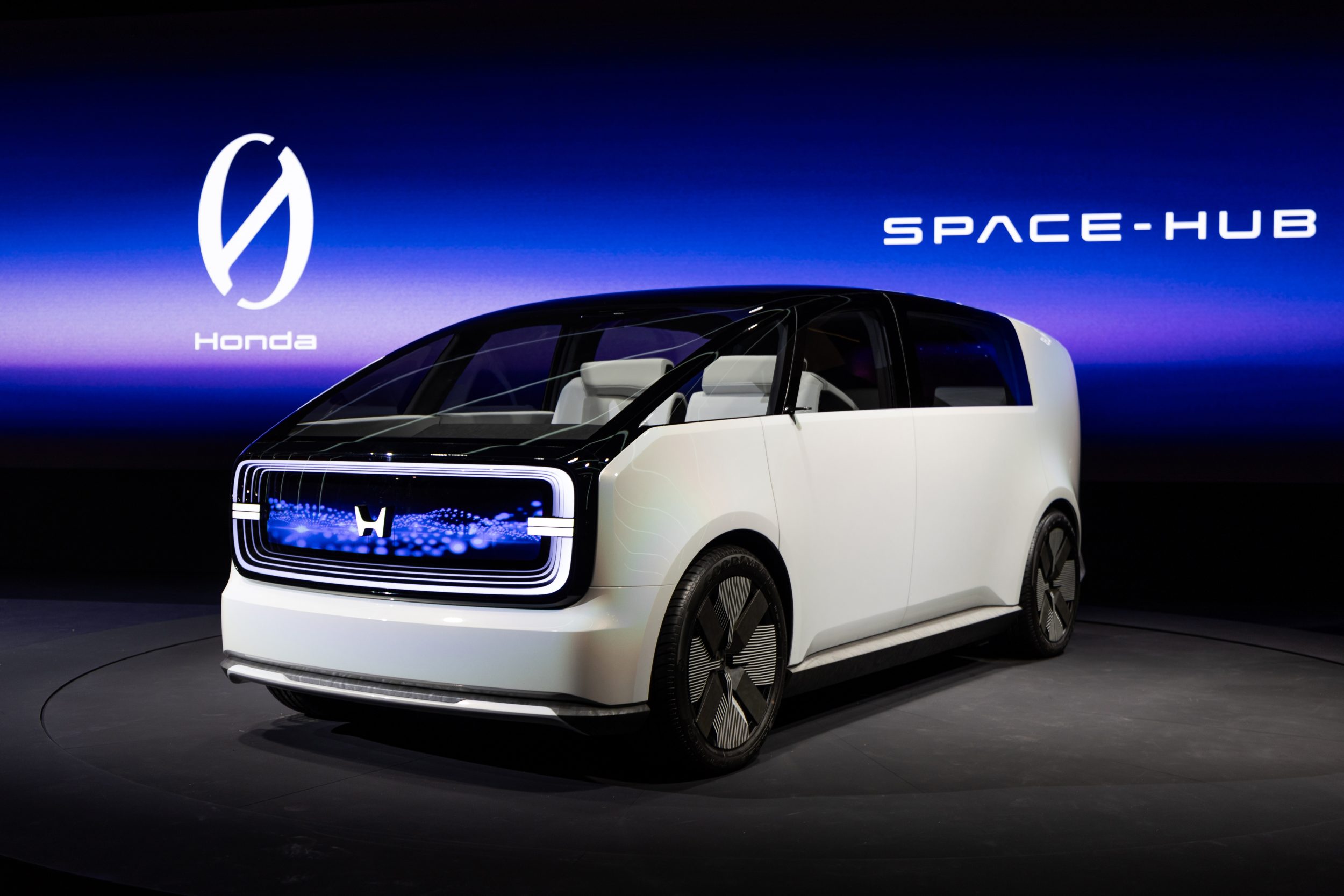
First, we have your look at Honda’s upcoming 0 series electric vehicles that is a thin and light take on what Harri writes has typically been a thick and heavy EV trend. The automaker teased two concept vehicles, the Saloon and Space-Hub, and said the first commercial model in its 0 series EV lineup will launch in North America in 2026. Get a look at the specs and more.
Next, Vietnamese EV startup VinFast is getting into the electric pickup truck game with the reveal of a new concept called the VF Wild. The truck will have midsize pickup dimensions, and a folding mid-gate to allow the five-foot bed to turn into something functionally closer to an eight-foot bed (when the rear seats are down). Not much else is known at the moment. The company also officially announced plans to start selling its smallest EV, the VF3, outside of Vietnam. Learn more.
Meanwhile, Google has a new feature for EV drivers to track and display real-time battery information in Google Maps. The feature is available in EVs with Android Auto, a secondary interface that runs on the user’s phone and wirelessly communicates and projects features like navigation, media and messaging from their Android-based smartphone to the vehicle display. From here, Android Auto shares real-time battery information with Google Maps. Find what your looking for here.
Say hello to the Honda 0 series EVs 🚗 The Saloon and Space-Hub concept models made their debut at #CES2024, along with a new H logo. What do you think of their futuristic designs? pic.twitter.com/sBaQC1UAcj
— TechCrunch (@TechCrunch) January 9, 2024

Google and Samsung announced they are combining their sharing solutions into a singular cross-Android solution under the Quick Share name. The new offering grows the network of devices that users can share content with across the Android ecosystem, including Chromebooks. By integrating Google’s Nearby Share and Samsung’s Quick Share, the two experiences create “the best default, built-in-option for peer-to-peer content sharing” across all types of devices in the Android and Chromebook ecosystems, according to the companies. Google also announced that it is working with PC manufacturers like LG to expand Quick Share to Windows PCs as a pre-installed app. Quick Share will start rolling out to current Nearby Share–enabled devices next month.
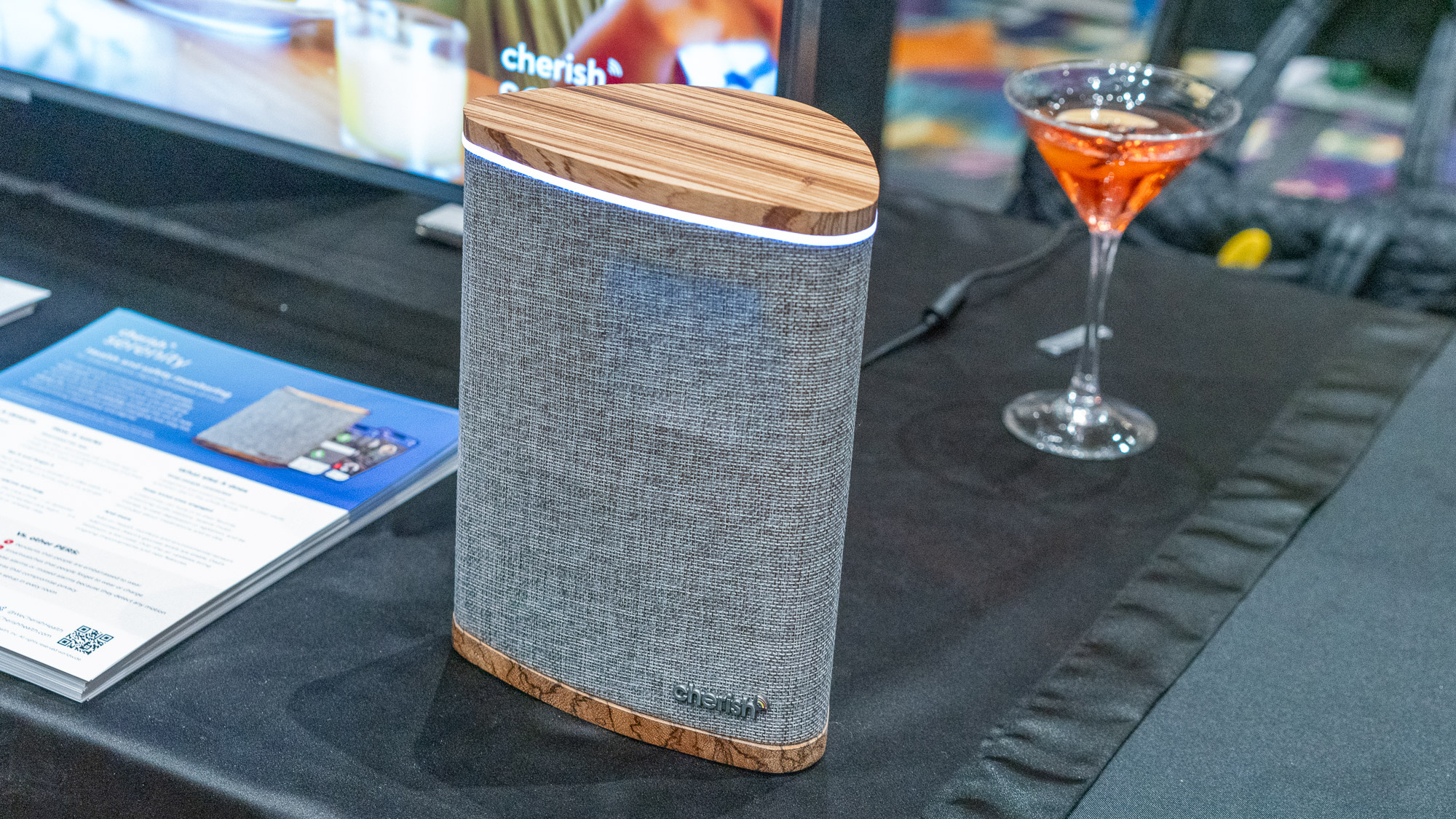
First, Serenity is showing off its fall-detection system for the first time at CES. It’s easy to use — just plug it in, no app or configurations required. It utilizes advanced radar technology and AI to track up to two individuals within a 40-foot range, even through walls, and offers detailed information about someone’s activities. See how Serenity’s technology sets it apart.
Next, Vivoo, a company offering a broad range of at-home tests, launched a new test that can detect urinary tract infections (UTIs). Vivoo’s At-Home UTI Test streamlines the diagnostic process for UTIs and utilizes your phone’s camera to record and analyze the color readout of the test strips. It then gives advice and context for the readings in its free app.
Meanwhile, Tack One, a Singapore-based startup, unveiled the new generation of its Tack GPS Plus, an AI-powered location technology device to help make sure your kids, elderly parents and pets are safe. Here’s what’s new: longer battery life and subscription fees starting from $2.95 monthly for a two-year subscription plan.
The startup launched its GPS tracker in 2021 to address the pain point of the short battery life on the market and lower the tracking service cost, making location tracking extremely affordable. Tack One’s battery lasts 30 days on a single charge and a patent-pending indoor elevation finder feature. Find out more on the specs and pricing.
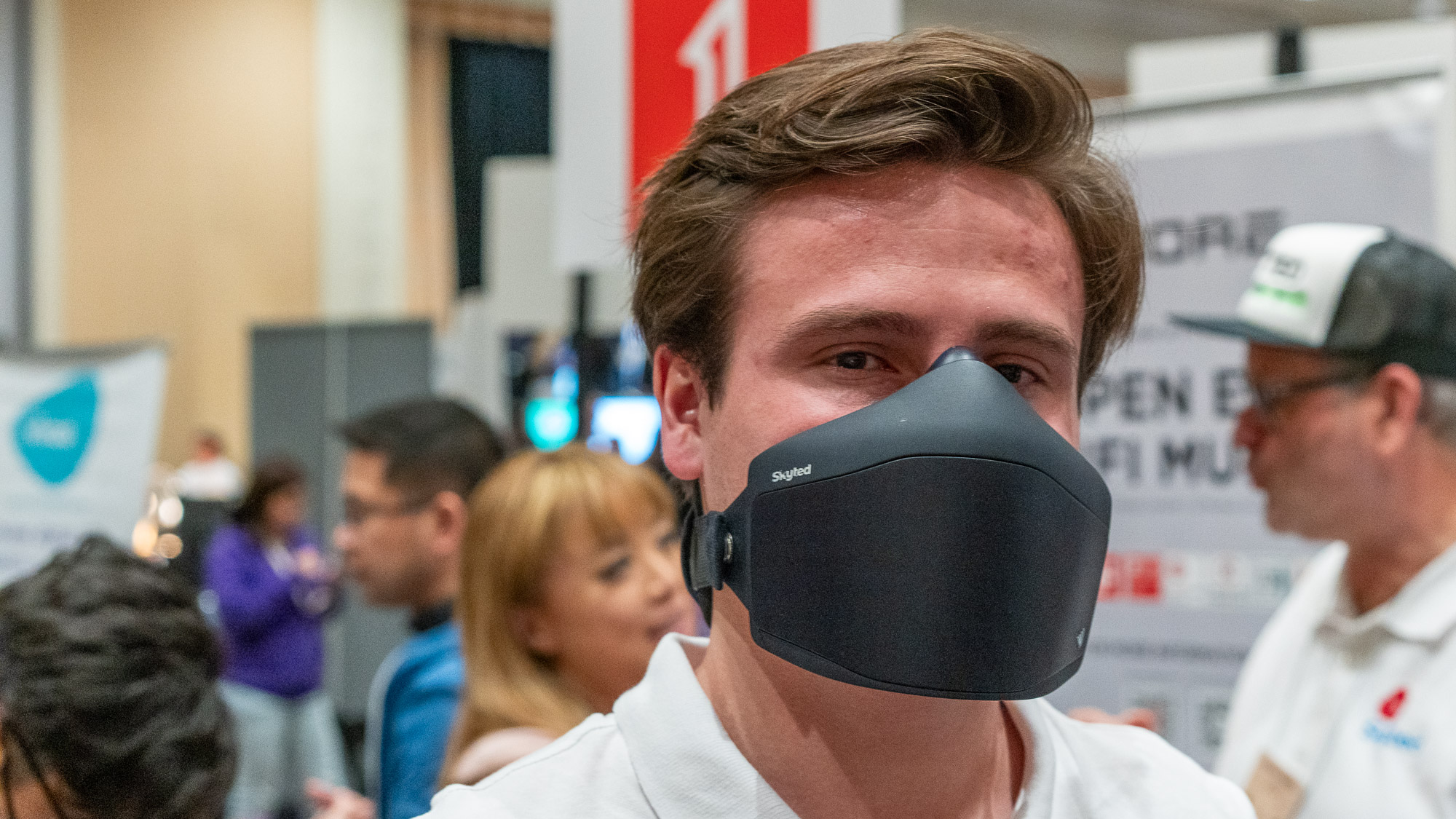
You read about Skyted’s voice-capturing mask last week, now see what it looks like in real life.
“We launched a mobile application that will give you information about how big your ‘sound bubble’ is. If, for example, you’re sitting in an airplane, you don’t want the person next to you to hear what you’re saying,” says Gauthier Daridon, connectivity engineer at Skyted, in an interview with TechCrunch at CES in Las Vegas. “So our application will explain that you are ‘perceptible’ and ‘intelligible’ at certain distances.” Get more of the scoop on how it works.

Amazon says it will be the first company to support Matter Casting, the video- and audio-beaming feature of the Matter smart home standard, on its smart displays and smart TVs. When it comes to Amazon’s Prime Video app for Android and iOS, users will be able to cast content to supported Amazon devices — starting with the Echo Show 15 — by tapping the new dedicated Matter Casting button. Beyond that, Amazon says that Matter Casting support will arrive on Fire TVs including smart TVs from Panasonic with Fire TV built in, and — on the app side — Plex, Pluto TV, Sling TV, Starz and ZDF later this year. Read more.
And, Amazon announced back in September that it would be coming out with some new tools to build large language model-powered experiences. Today, we got to see them in action, including new generative AI-powered Alexa experiences, including AI chatbot platform Character.AI, AI music company Splash and Voice AI game developer Volley. All three experiences are available in the Amazon Alexa Skill Store. Learn more about Alexa’s experiences.
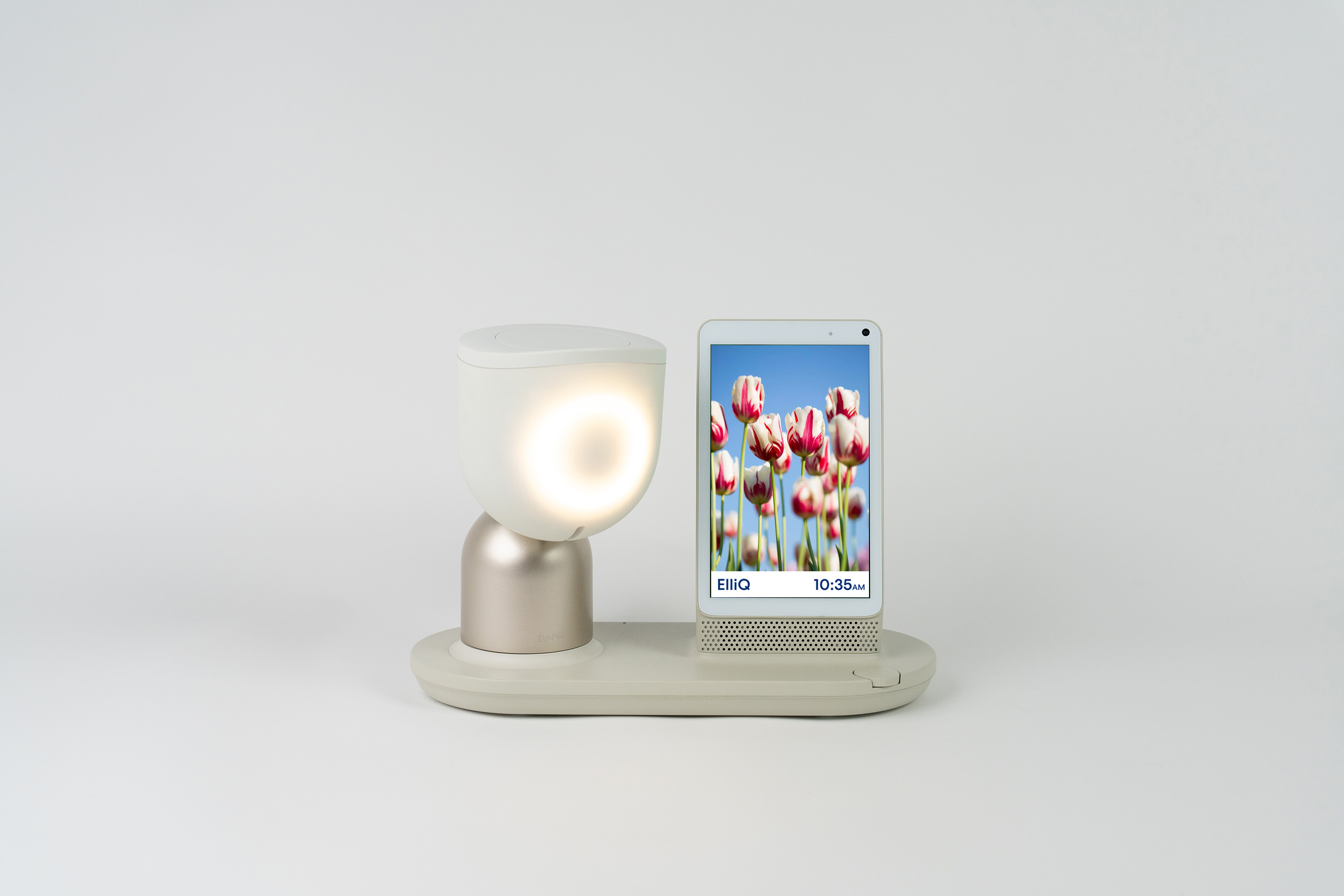
Intuition Robotics’ ElliQ, which went on the market last March, and found some success through partnerships with assistive care facilities. After some fresh funding, the company unveils ElliQ 3, featuring some design tweaks like a more powerful hardware, increased memory, updated core processor, a lighter apparatus and – of course – generative AI integration. Read more.
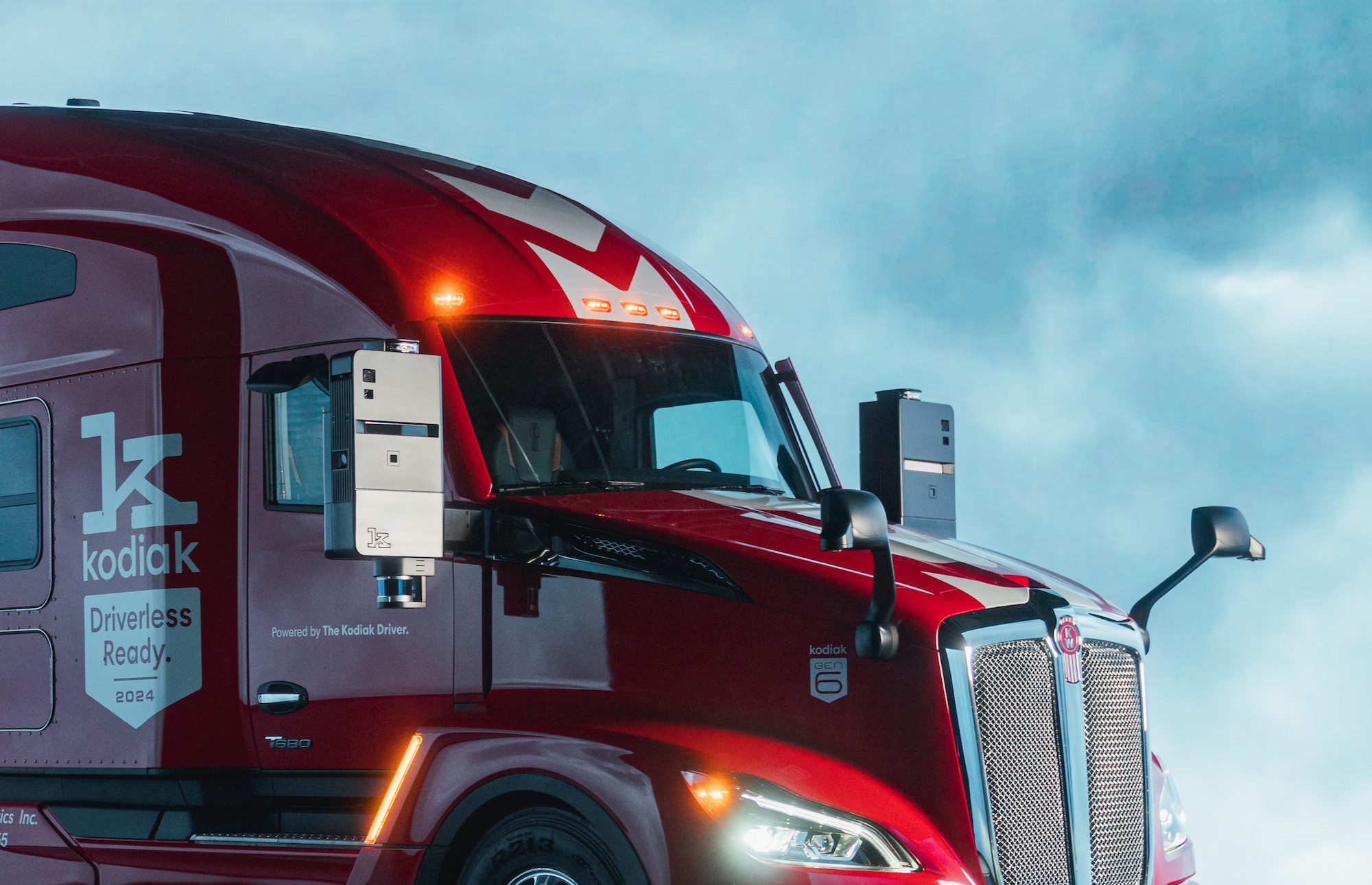
Autonomous trucking startup Kodiak Robotics revealed a semi-truck that founder Don Burnette says “is the linchpin in its plans to launch commercial driverless operations this year.” The company specifically set out to include redundancy in its safety features so that there is a backup in case anything were to fail while on the highway with a driver behind the wheel. Get a breakdown of the mechanical components and safety systems.
Fox has partnered with Polygon Labs, a developer of scaling networks for Ethereum, to release an open source protocol — called Verify — for media companies to register their articles, photographs and more. Fox and Polygon are pitching the protocol as a means for outlets to protect their IP while letting consumers verify the authenticity of content. Learn more about the protocol.
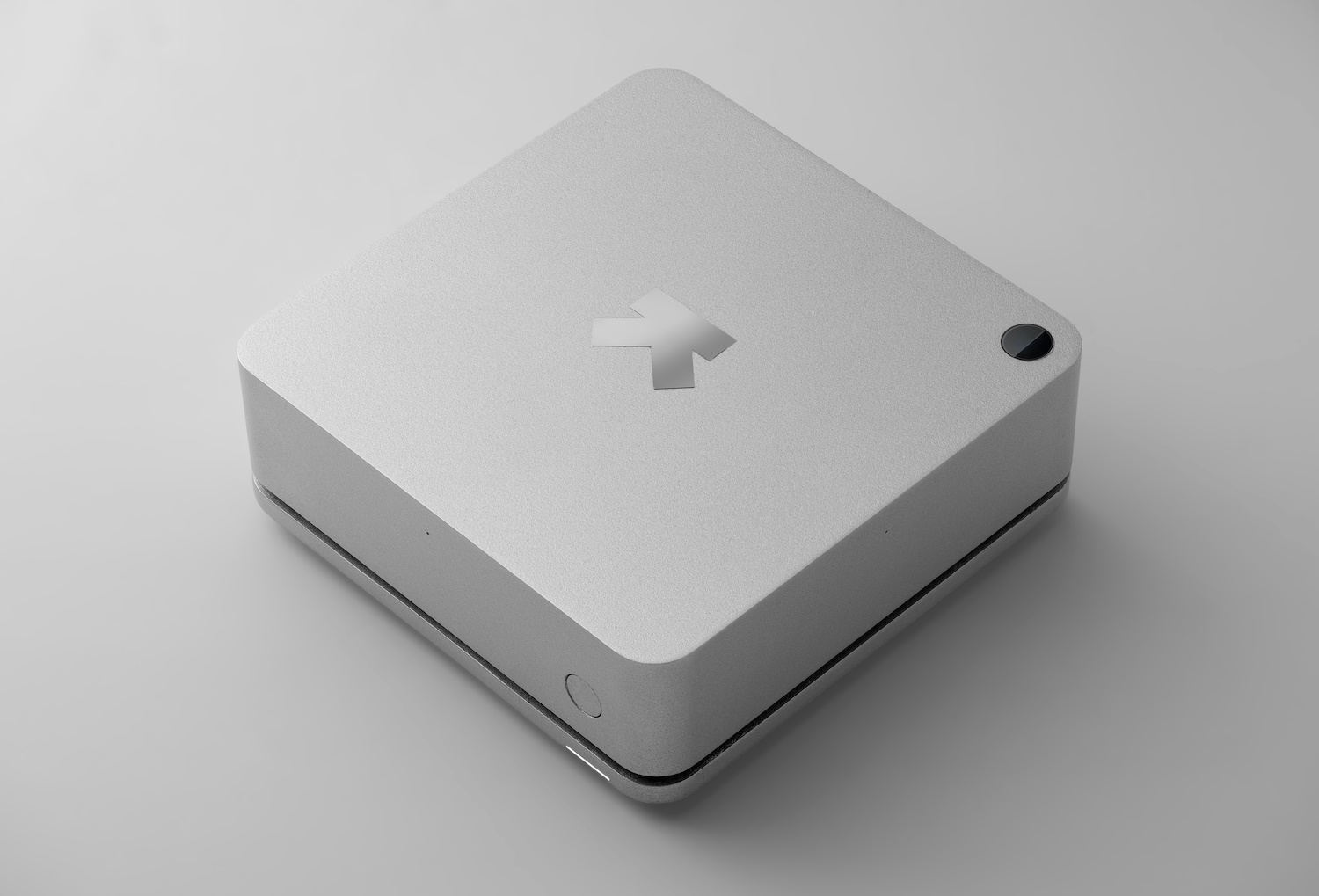
Indian wearable startup Ultrahuman is getting into the smart home game with the upcoming launch of connected hardware that’s designed to monitor the “health” of your home, as its marketing puts it. The device, which it’s calling the Ultrahuman Home, has a price of $349 and a shipping date slated to start in July. Check out the specs.
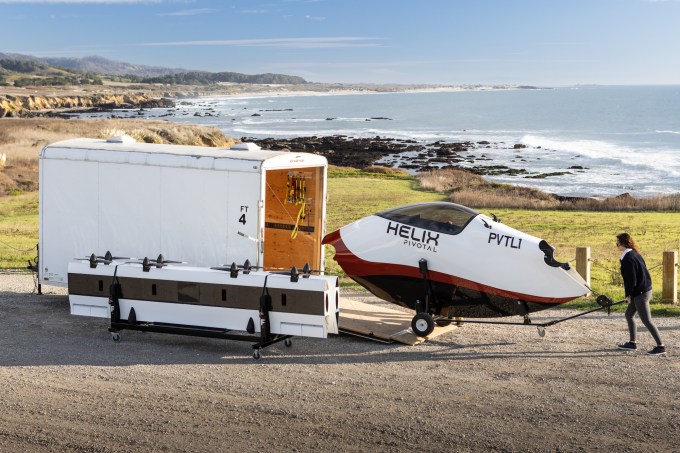
Pivotal, which is backed by Larry Page, has begun U.S. sales of its lightweight electric Helix aircraft, which notably does not require a pilot’s license to be able to fly. That doesn’t mean those paying at least the $190,000 base price will go without mandatory training; a number of rules and regulations still apply. You can get the full breakdown of their launch pricing and specs right here.
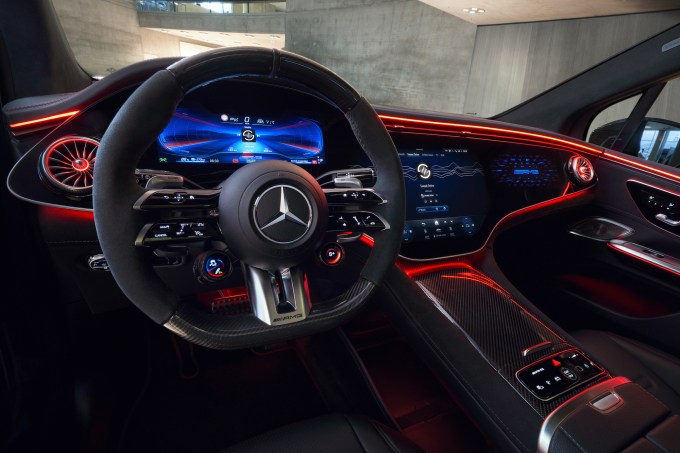
If you thought that sounded a little ridiculous, contributor Tim Stevens did too — at least until taking part in the startup Sound Drive’s demo at CES that left him feeling surprisingly impressed with the underlying tech. Read his full impressions of what it’s like to experience music “conducted by the road.”
Sony took the final major press conference slot on Monday, with an expected focus around creators; the success of its IP across its gaming, film and streaming studios; and a focus on its partnership with Honda to imagine the mobility space as a “creativity space.” The latter was demonstrated in part by teasing Fortnite in its Afeela car and driving it onstage with a PlayStation 5 controller. Its “digital birth certificate” also reminded us of the brighter side of NFTs, which Haje explains in detail here.
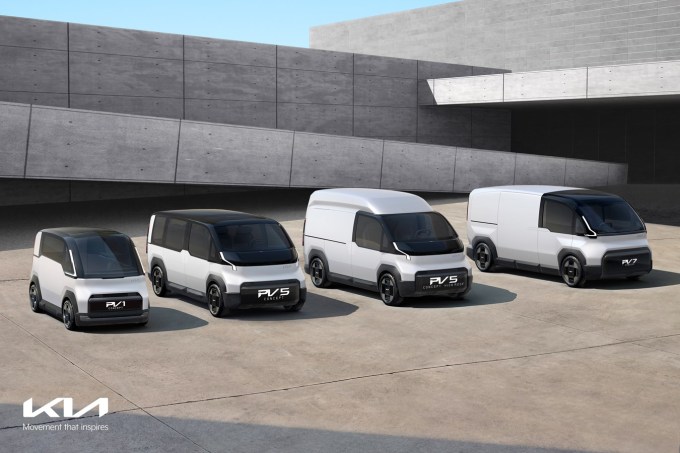
Kia’s new EV vans come with a modular twist. In addition to using a modular powertrain, the vehicles will also have modular tops that allow for many different cabin options. But they remained vague on pricing, specs and expected launch dates for this new fleet of commercial EVs. Read more.

Meet the new and improved Ballie, Samsung Electronic’s home robot, which it previewed today. It’s around the size of a bowling ball with a battery designed to last two to three hours. Ballie sports a spatial lidar sensor to help it navigate rooms and obstacles, as well as a 1080p projector with two lenses that allows the robot to project movies and video calls and even act as a second PC monitor. Learn more.
Expanding beyond cute, rolling robots, Samsung showcased its wider initiatives for connected homes. Aside from expected UI and feature updates for its existing SmartThings home automation platform, Samsung showed off a “map view” for users that creates an interactive home map that even includes animated avatars of residents and pets. Learn more.
Also, Samsung devoted some of its keynote speech to its commitment of sustainability. “We start by incorporating recycled materials into some of our most loved products, such as recycled fishing nets in our Galaxy,” said Inhee Chung, VP of corporate sustainability at Samsung. “Smartphones, recycled plastic in our TVs, and recycled aluminum in our bespoke refrigerators. Recycled plastic accounted for 14% of the total plastic used in our products in 2022. And we’re working towards increasing this amount.” Read more.
Remember Samsung's Ballie? The round robot first revealed in 2020 has made a comeback at #CES2024. https://t.co/CCO8T1g0lH pic.twitter.com/OkrXr8jgiE
— TechCrunch (@TechCrunch) January 8, 2024

Timekettle announced the X1 Interpreter Hub, a more robust solution, designed for meetings. Timekettle calls it “the world’s first multi-language simultaneous interpretation system.” The system works out of the box, without having to download a separate app. For in-person meetings, two devices are touched together to initiate conversation translation. The handheld devices house earbuds, similar to past Timekettle products. All told, the X1 is capable of supporting up to 20 people at once in five different languages. Read more.

Televisions aren’t naturally pretty or used as a design feature, but LG Electronics is out to change that perception. Today, consumer technology giant unveiled what it touts is “the world’s first” wireless transparent OLED TV. The LG Signature OLED T combines a transparent 4K OLED screen with LG’s wireless video and audio transmission technology.
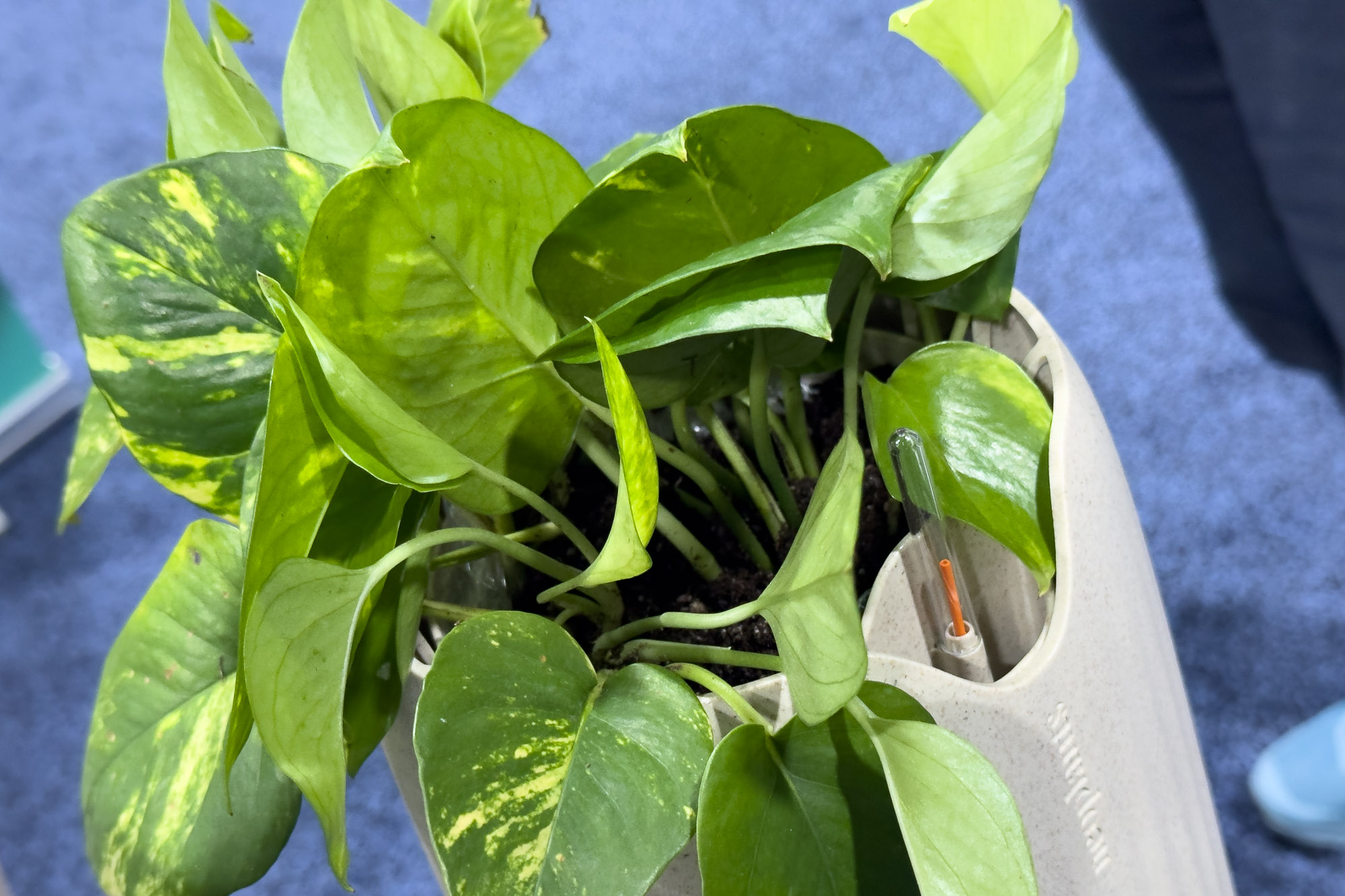
French startup Neoplants is showing off its progress with its houseplants that work as air purifiers designed for the home. The bio-engineered plants can, according to the company, replace 20 “regular” houseplants, as measured by how many pollutants the plants can remove from the air.

Ahead of Samsung Electronics’ press conference later today, we look at some of its product plans that include a “new generation of products that can be folded inward and outward,” along with “monitor-sized” folding and sliding OLEDs. Samsung also unveiled a “Transparent MICRO LED” display for the first time.
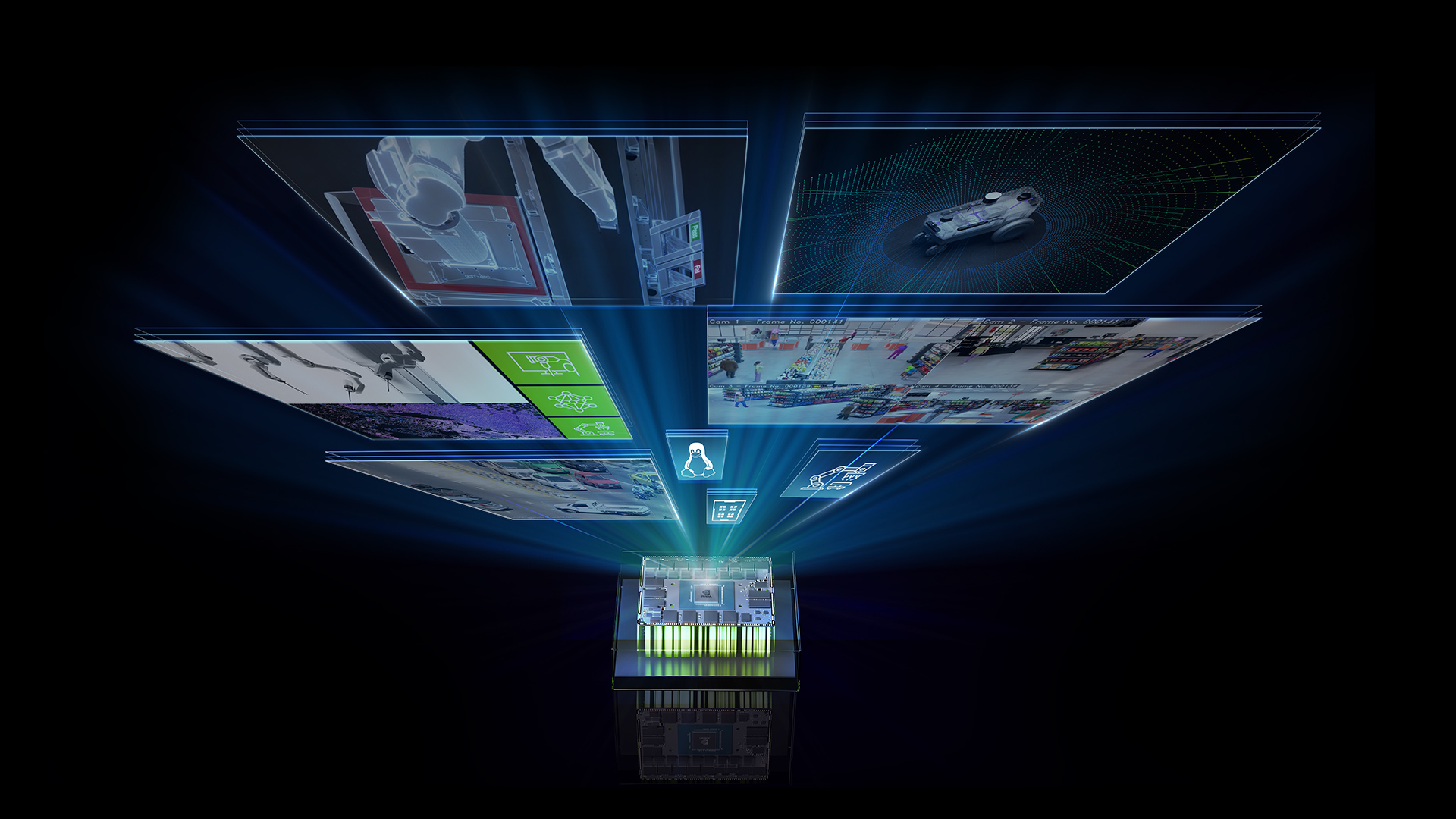
Today, Nvidia gets into artificial intelligence in a big way with the unveiling of its GeForce RTX, including the GeForce RTX 40 Super series of desktop graphics cards. Much of these are meant for gaming, and Nvidia said 14 titles will get the RTX upgrade treatment, including Horizon Forbidden West, Pax Dei, and Diablo IV. The RTX 4080 Super starts at $999.
Nvidia also announced that its partnership with Getty Images will include a new service for iStock customers, which can create licensable images trained on the existing iStock photo library.
Nvidia also showed off ACE, which uses AI to create unique reactions from in-game NPCs, which gives an uncanny valley sheen on top of prompt response dialog.
At #CES2024, NVIDIA demonstrated their Avatar Cloud Engine (ACE) for gaming, which aims to give NPCs AI-generated dialogue. pic.twitter.com/QKRervzvjY
— TechCrunch (@TechCrunch) January 8, 2024
Speaking of chips, AMD debuted its new Ryzen 8000G processors for the desktop, with a big focus on their AI capabilities.

Bosch is showing off two technologies this week in eye-tracking while driving: One will see that you have tired eyes and ask if you need an espresso when you arrive home. If yes, its connect technology will tell your fancy machine to have one ready. The other is a bit more complicated in that it’s developed to track what you’re looking at as you drive.
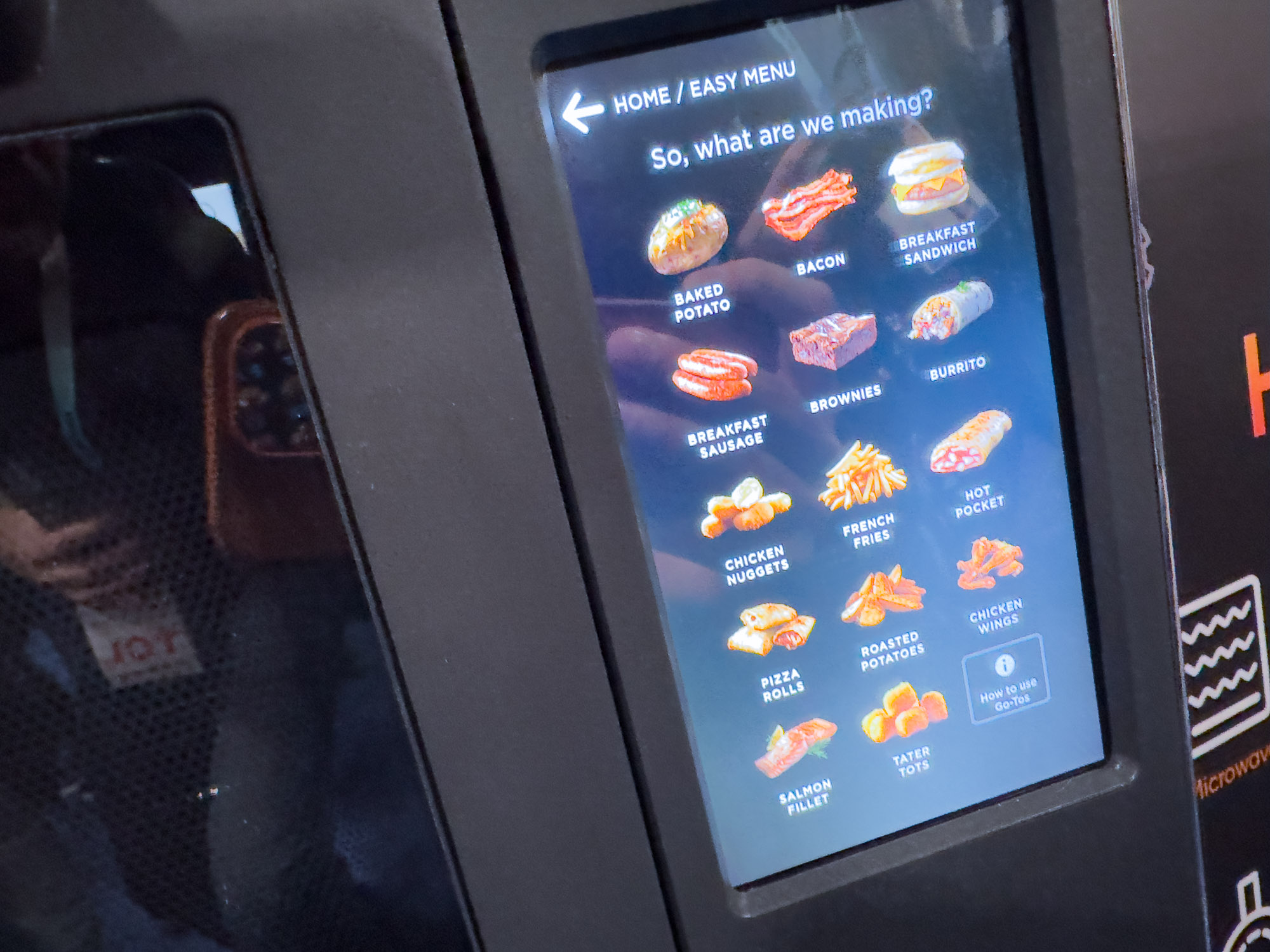
We have a collection of small home appliances for the kitchen, from grills to smart microwaves and everything in between, that is sure to get you cooking this year, if you aren’t already.
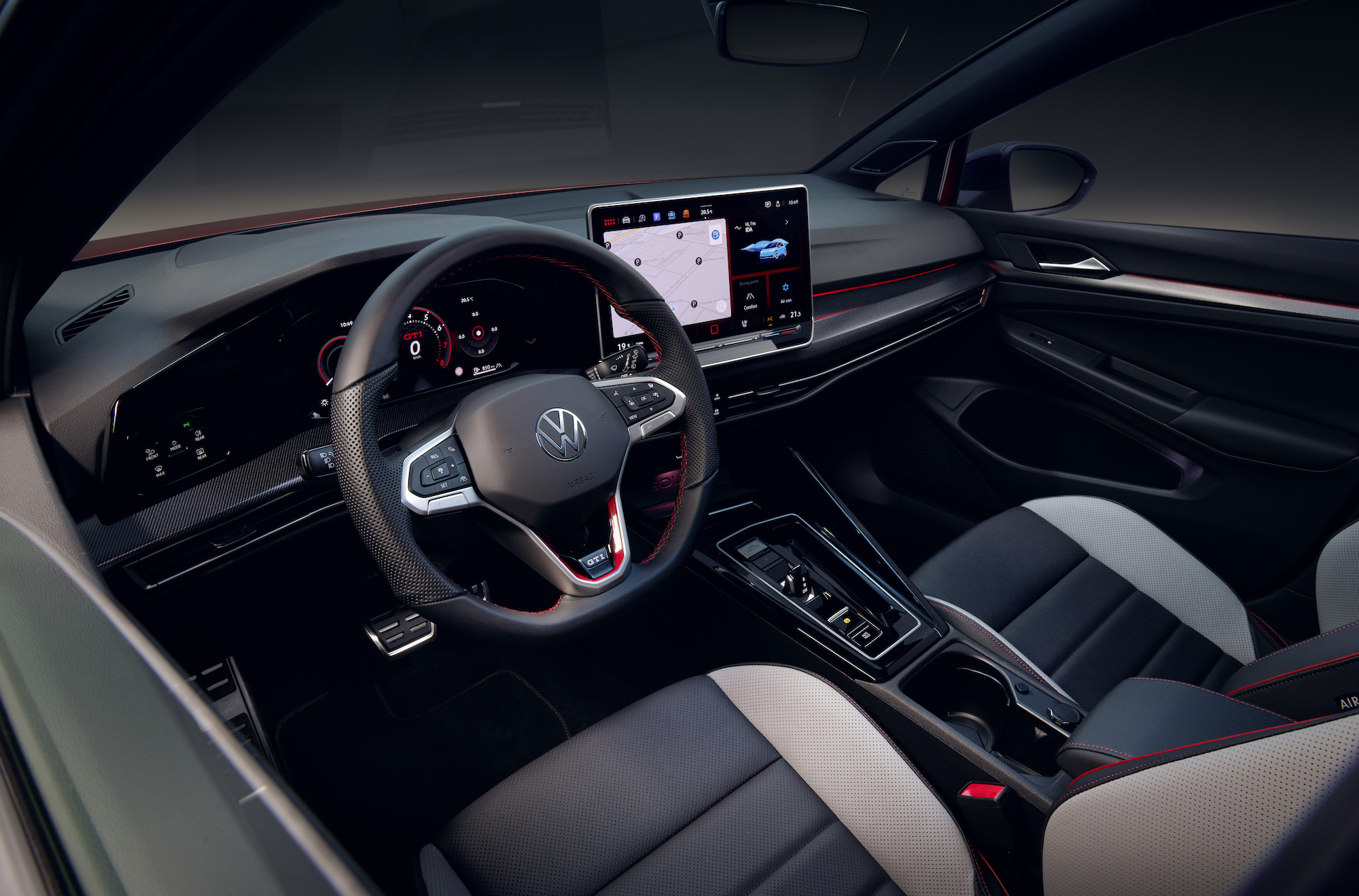
The German automaker plans to add an AI-powered chatbot into all Volkswagen models equipped with its IDA voice assistant. For now, it’s not available in the U.S.
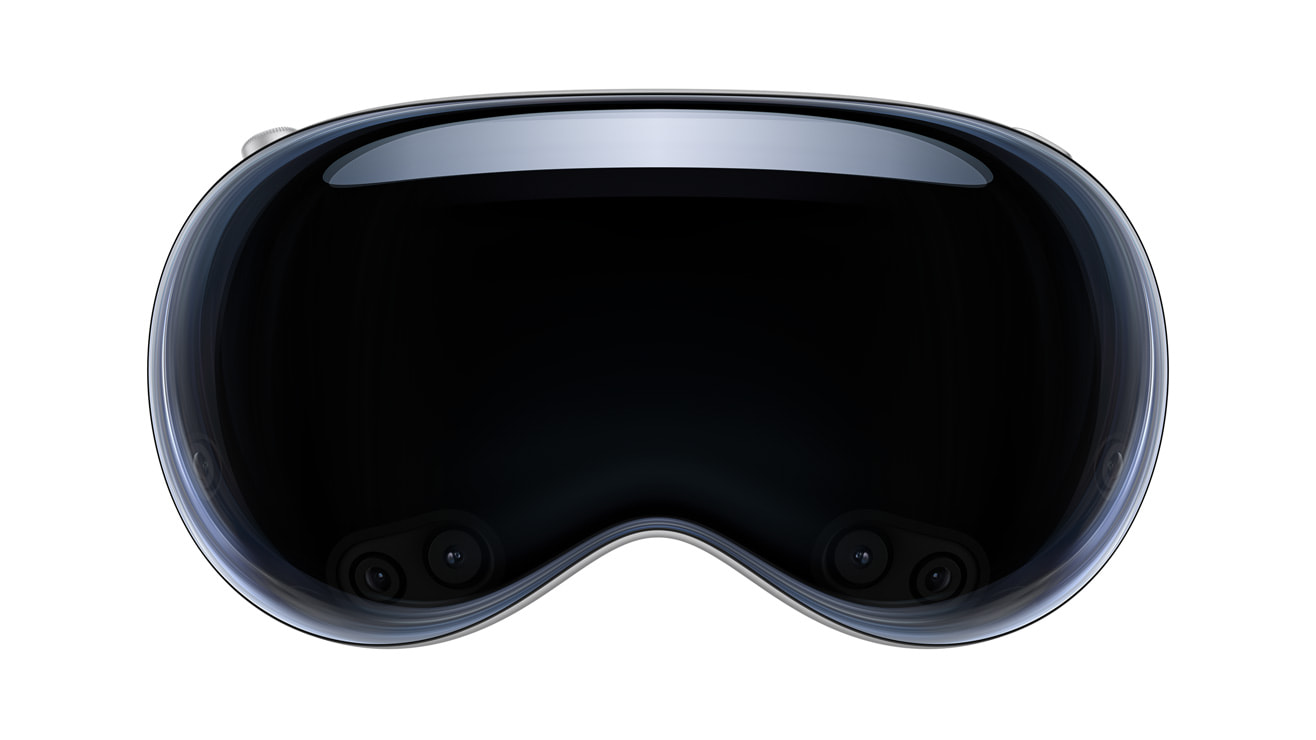
And Apple, in a surprise announcement preempting CES, stole some of the show’s thunder by announcing the Vision Pro will be available in the U.S. The consumer electronics giant confirmed that the Vision Pro will be available in the U.S. starting February 2. Pre-orders for the $3,500 spatial computing device open Friday, January 19.
Some companies made announcements ahead of the big event. Check out what’s already made headlines:
Withings’ new multiscope device checks vitals for telehealth visits
Invoxia has a new smart collar suitable for both cats and dogs
This app lets restaurants and coffee shops charge to use the bathroom
Aurora and Continental pass first major hurdle in commercial self-driving trucks deal
This startup is bringing a ‘voice frequency absorber’ to CES 2024
For just $139, this startup turns your iPhone into a BlackBerry-era relic
Qualcomm next-gen XR chip promises up to 4.3K resolution per eye
Urbanista integrates Powerfoyle tech with solar-powered headphones
Moonwalker robotic shoes get lighter and smarter


CES 2024 is here! The TechCrunch team is in Las Vegas this week to take in all of the action and decipher what it means to you. You already know what we’re expecting, so sit back, relax and stay tuned throughout the week as we bring you the products, announcements and startup news that you need to know.
Kicking off the first day were some bigger announcements from companies, including Nvidia, LG, Sony and Samsung. Those livestreams have ended, but you can watch most of their archives and catch up right here. And with the event still ongoing, and the show floor open, here’s how you can follow along with our team’s coverage.
Or, to dive into each day’s updates directly, you can follow these links:
ThursdayWednesdayTuesdayMonday

Earlier in the week, Haje Jan Kamps took a closer look at Rownd. Then he found Coast Runner, a new entrant in the desktop CNC milling industry. This company, Haje writes, is promising to make the technology accessible to everyone, from professionals to hobbyists and is breaking down the barriers of traditional CNC milling with a focus on power, compact size and, most importantly, education.
In today’s Equity, Alex Wilhelm and Mary Ann Azevedo are joined by Kirsten Korosec and Haje Jan Kamps to discuss, among other things, some of the cool stuff that came out of CES, including this Bane-style mask, ChatGPT in cars and eVTOLs.
Haje Jan Kamps is taking another look at 444, a smart pepper spray startup he had written about at CES 2023. 444, he writes, is back again, now with a Mace partnership under its belt and about to start manufacturing.

With all of the collaboration — and CES announcements — between top electronic companies to get Matter, the smart home networking protocol, off the ground, 2024 could be Matter’s best year yet. Kyle Wiggers has a list of the devices to show us why.

After seeing all the examples of artificial intelligence baked into the booths of CES, Devin Coldewey put together a list of gadgets, products and software he thought actually might do some good.
Also, Haje Jan Kamps writes about the MMGuardian, a smartphone produced in collaboration with Samsung that’s tapping into the power of AI to make phone use safer for kids and teenagers.
Harri Weber and Sean O’Kane discuss the examples of hydrogen-power vehicles (TechCrunch+ gets into that too) on the CES floor and why it’s now a popular alternative energy after previously fizzling out. Or, they write, “is it yet another example of companies making promises at CES that they won’t be able to keep?”

Kirsten Korosec caught up with Polestar CEO Thomas Ingenlath who discussed the integration of the Google built-in, a branded product that embeds Google apps and services directly into the company’s EVs. Don’t worry, Ingenlath says the EV maker isn’t dropping Android Auto or Apple CarPlay as a result.

With cameras in different places, it’s often difficult to maintain eye contact with someone on video calls. There is AI for that, however, one company is taking a different approach. EyeQ is developing a device that attaches to your laptop and, through the use of a mirror, enables you to maintain eye contact with the person you’re speaking to, even while looking at your screen.

As Tim De Chant notes, Hyundai has invested in hydrogen fuel cells for decades, but it has also been one of the more successful legacy automakers at navigating the electric transition. So it’s odd now that a company with so much momentum on its side would throw a hydrogen Hail Mary at CES.
Meanwhile, Haje Jan Kamps had a lot of time to contemplate how Siri works while driving to Las Vegas. He shares some areas where Apple’s voice assistant, Siri, is being left in the dust by its competitors.

Whispp is working to change the game for individuals with speech disorders and voice disabilities, bringing voice boxes into the current millennium with its groundbreaking AI-powered assistive speech and phone-calling app. The company launched its newest phone-calling feature that converts whispered and vocal cord-impaired speech into a user’s natural voice in real time.

Haje Jan Kamps was keeping tabs on Rownd’s new tabletop CNC lathe and got to see it in action this week. He writes that what sets Rownd Lathe apart is not just its relatively affordable hardware (the machine retails at around $5k) but the accompanying software that democratizes the design process, enabling beginners to easily create or utilize pre-made designs from the open-source Rownd Library. Watch it craft a chess pawn.

Devin Coldewey found what Zoe Care was doing in the area of fall detection and elderly autonomy interesting. The company uses existing Wi-Fi signals (and the way our bodies change how Wi-Fi reception works) to detect humans and their activities.
Unlike the Serenity desktop fall detection network we discussed earlier this week, Zoe’s device doubles as a smart plug, and uses a sensor to gather and analyze Wi-Fi signals. If a fall is detected, these signals are translated into alerts on a mobile application. Covering up to 800 sq. ft., just one device can secure multiple rooms or even an entire floor, making it an efficient, cost-effective solution.

That’s the question Harri Weber set out to answer after hearing the phrase uttered all over the CES floor. In it’s most simplest definition, it’s a vehicle defined by software. However, as Harri spoke with various experts, we learn the term can mean various things. Go inside the journey to find out why this is such a popular automotive buzzword.

One thing is consistent throughout every CES: weird and unexpected gadgets and gizmos appear from unexpected places. We have a rundown of some of the most noteworthy products and services here, which include expensive binoculars with birdwatching AI, voice-absorbing muzzles, pay-as-you-go bathroom access and a router that tries to fit your aesthetic.

Beyond the outright strange products and platforms, there are some hidden gems amid the big booths and name brands at CES. Our own Haje Jan Kamps has highlighted several already that stand out from the crowd. He gave Breggz’s $2,000 earbuds a listen and discovered they actually deliver on their price point for audio perfectionists. He took a look at Augmental’s impressive ambitions to create accessible interfaces that can accommodate for voiceless communication. And he explored Nowatch’s purposeful fitness tracker that uses AI to keep you aware of your health goals without overly stressing you out.

Supernal’s electric vertical takeoff and landing (eVTOL) aircraft got a showcase from its parent company Hyundai Motor Group on the ground in Las Vegas, as the so-named S-A2 moves closer to its planned 2028 launch for shuttling passengers. Head here for a full rundown on the aircraft, and the challenges in expanding airborne mobility.

Mobinn, a new spinoff from Hyundai, is taking to CES to show off how its new delivery robot can use its flexible wheels to navigate stairs and changes in elevation to drop off deliveries, with tests already being conducted in Korea. Climb aboard the full story here.

Walmart president and CEO Doug McMillon shared some new technologies the retail giant has been working on, including augmented reality (AR), drones, generative artificial intelligence, and other AI tech meant to improve the shopping experience for customers. Within the presentation were some new tools for managing product search and replenishment and a new beta AR social commerce platform called “Shop with Friends.” Get the scoop on all of the new products.

Put this in one in the “thoughtful” category. OneCourt, a startup founded by recent University of Washington graduates, debuted a lap-top miniature field that enables someone who is blind or with low vision feel the position of sports players and the ball in near real time. The OneCourt team takes this information and transmits it to a haptic display with a touchable cover imitating the pitch or field lines. See how it works.

Devin writes that the idea behind the $200 rabbit r1 is simple: “it lets you keep your phone in your pocket when you need to do some simple task like ordering a car to your location, looking up a few places to eat where you’re meeting friends, or finding some lodging options for a weekend on the coast. Instead of pulling out your phone, unlocking it, finding the app, opening it, and working your way through the UI (so laborious!), you pull out the r1 instead and give it a command in natural language.” Now hop over to the story for more.
Move over, Siri. The rabbit r1 is a pocket AI assistant that can navigate your apps for you, without you having to pick up your phone.
Check out our preview from #CES2024: https://t.co/R6naLv9ckH pic.twitter.com/aUbz0WW1xI
— TechCrunch (@TechCrunch) January 9, 2024

First, we have your look at Honda’s upcoming 0 series electric vehicles that is a thin and light take on what Harri writes has typically been a thick and heavy EV trend. The automaker teased two concept vehicles, the Saloon and Space-Hub, and said the first commercial model in its 0 series EV lineup will launch in North America in 2026. Get a look at the specs and more.
Next, Vietnamese EV startup VinFast is getting into the electric pickup truck game with the reveal of a new concept called the VF Wild. The truck will have midsize pickup dimensions, and a folding mid-gate to allow the five-foot bed to turn into something functionally closer to an eight-foot bed (when the rear seats are down). Not much else is known at the moment. The company also officially announced plans to start selling its smallest EV, the VF3, outside of Vietnam. Learn more.
Meanwhile, Google has a new feature for EV drivers to track and display real-time battery information in Google Maps. The feature is available in EVs with Android Auto, a secondary interface that runs on the user’s phone and wirelessly communicates and projects features like navigation, media and messaging from their Android-based smartphone to the vehicle display. From here, Android Auto shares real-time battery information with Google Maps. Find what your looking for here.
Say hello to the Honda 0 series EVs 🚗 The Saloon and Space-Hub concept models made their debut at #CES2024, along with a new H logo. What do you think of their futuristic designs? pic.twitter.com/sBaQC1UAcj
— TechCrunch (@TechCrunch) January 9, 2024

Google and Samsung announced they are combining their sharing solutions into a singular cross-Android solution under the Quick Share name. The new offering grows the network of devices that users can share content with across the Android ecosystem, including Chromebooks. By integrating Google’s Nearby Share and Samsung’s Quick Share, the two experiences create “the best default, built-in-option for peer-to-peer content sharing” across all types of devices in the Android and Chromebook ecosystems, according to the companies. Google also announced that it is working with PC manufacturers like LG to expand Quick Share to Windows PCs as a pre-installed app. Quick Share will start rolling out to current Nearby Share–enabled devices next month.

First, Serenity is showing off its fall-detection system for the first time at CES. It’s easy to use — just plug it in, no app or configurations required. It utilizes advanced radar technology and AI to track up to two individuals within a 40-foot range, even through walls, and offers detailed information about someone’s activities. See how Serenity’s technology sets it apart.
Next, Vivoo, a company offering a broad range of at-home tests, launched a new test that can detect urinary tract infections (UTIs). Vivoo’s At-Home UTI Test streamlines the diagnostic process for UTIs and utilizes your phone’s camera to record and analyze the color readout of the test strips. It then gives advice and context for the readings in its free app.
Meanwhile, Tack One, a Singapore-based startup, unveiled the new generation of its Tack GPS Plus, an AI-powered location technology device to help make sure your kids, elderly parents and pets are safe. Here’s what’s new: longer battery life and subscription fees starting from $2.95 monthly for a two-year subscription plan.
The startup launched its GPS tracker in 2021 to address the pain point of the short battery life on the market and lower the tracking service cost, making location tracking extremely affordable. Tack One’s battery lasts 30 days on a single charge and a patent-pending indoor elevation finder feature. Find out more on the specs and pricing.

You read about Skyted’s voice-capturing mask last week, now see what it looks like in real life.
“We launched a mobile application that will give you information about how big your ‘sound bubble’ is. If, for example, you’re sitting in an airplane, you don’t want the person next to you to hear what you’re saying,” says Gauthier Daridon, connectivity engineer at Skyted, in an interview with TechCrunch at CES in Las Vegas. “So our application will explain that you are ‘perceptible’ and ‘intelligible’ at certain distances.” Get more of the scoop on how it works.

Amazon says it will be the first company to support Matter Casting, the video- and audio-beaming feature of the Matter smart home standard, on its smart displays and smart TVs. When it comes to Amazon’s Prime Video app for Android and iOS, users will be able to cast content to supported Amazon devices — starting with the Echo Show 15 — by tapping the new dedicated Matter Casting button. Beyond that, Amazon says that Matter Casting support will arrive on Fire TVs including smart TVs from Panasonic with Fire TV built in, and — on the app side — Plex, Pluto TV, Sling TV, Starz and ZDF later this year. Read more.
And, Amazon announced back in September that it would be coming out with some new tools to build large language model-powered experiences. Today, we got to see them in action, including new generative AI-powered Alexa experiences, including AI chatbot platform Character.AI, AI music company Splash and Voice AI game developer Volley. All three experiences are available in the Amazon Alexa Skill Store. Learn more about Alexa’s experiences.

Intuition Robotics’ ElliQ, which went on the market last March, and found some success through partnerships with assistive care facilities. After some fresh funding, the company unveils ElliQ 3, featuring some design tweaks like a more powerful hardware, increased memory, updated core processor, a lighter apparatus and – of course – generative AI integration. Read more.

Autonomous trucking startup Kodiak Robotics revealed a semi-truck that founder Don Burnette says “is the linchpin in its plans to launch commercial driverless operations this year.” The company specifically set out to include redundancy in its safety features so that there is a backup in case anything were to fail while on the highway with a driver behind the wheel. Get a breakdown of the mechanical components and safety systems.
Fox has partnered with Polygon Labs, a developer of scaling networks for Ethereum, to release an open source protocol — called Verify — for media companies to register their articles, photographs and more. Fox and Polygon are pitching the protocol as a means for outlets to protect their IP while letting consumers verify the authenticity of content. Learn more about the protocol.

Indian wearable startup Ultrahuman is getting into the smart home game with the upcoming launch of connected hardware that’s designed to monitor the “health” of your home, as its marketing puts it. The device, which it’s calling the Ultrahuman Home, has a price of $349 and a shipping date slated to start in July. Check out the specs.

Pivotal, which is backed by Larry Page, has begun U.S. sales of its lightweight electric Helix aircraft, which notably does not require a pilot’s license to be able to fly. That doesn’t mean those paying at least the $190,000 base price will go without mandatory training; a number of rules and regulations still apply. You can get the full breakdown of their launch pricing and specs right here.

If you thought that sounded a little ridiculous, contributor Tim Stevens did too — at least until taking part in the startup Sound Drive’s demo at CES that left him feeling surprisingly impressed with the underlying tech. Read his full impressions of what it’s like to experience music “conducted by the road.”
Sony took the final major press conference slot on Monday, with an expected focus around creators; the success of its IP across its gaming, film and streaming studios; and a focus on its partnership with Honda to imagine the mobility space as a “creativity space.” The latter was demonstrated in part by teasing Fortnite in its Afeela car and driving it onstage with a PlayStation 5 controller. Its “digital birth certificate” also reminded us of the brighter side of NFTs, which Haje explains in detail here.

Kia’s new EV vans come with a modular twist. In addition to using a modular powertrain, the vehicles will also have modular tops that allow for many different cabin options. But they remained vague on pricing, specs and expected launch dates for this new fleet of commercial EVs. Read more.

Meet the new and improved Ballie, Samsung Electronic’s home robot, which it previewed today. It’s around the size of a bowling ball with a battery designed to last two to three hours. Ballie sports a spatial lidar sensor to help it navigate rooms and obstacles, as well as a 1080p projector with two lenses that allows the robot to project movies and video calls and even act as a second PC monitor. Learn more.
Expanding beyond cute, rolling robots, Samsung showcased its wider initiatives for connected homes. Aside from expected UI and feature updates for its existing SmartThings home automation platform, Samsung showed off a “map view” for users that creates an interactive home map that even includes animated avatars of residents and pets. Learn more.
Also, Samsung devoted some of its keynote speech to its commitment of sustainability. “We start by incorporating recycled materials into some of our most loved products, such as recycled fishing nets in our Galaxy,” said Inhee Chung, VP of corporate sustainability at Samsung. “Smartphones, recycled plastic in our TVs, and recycled aluminum in our bespoke refrigerators. Recycled plastic accounted for 14% of the total plastic used in our products in 2022. And we’re working towards increasing this amount.” Read more.
Remember Samsung's Ballie? The round robot first revealed in 2020 has made a comeback at #CES2024. https://t.co/CCO8T1g0lH pic.twitter.com/OkrXr8jgiE
— TechCrunch (@TechCrunch) January 8, 2024

Timekettle announced the X1 Interpreter Hub, a more robust solution, designed for meetings. Timekettle calls it “the world’s first multi-language simultaneous interpretation system.” The system works out of the box, without having to download a separate app. For in-person meetings, two devices are touched together to initiate conversation translation. The handheld devices house earbuds, similar to past Timekettle products. All told, the X1 is capable of supporting up to 20 people at once in five different languages. Read more.

Televisions aren’t naturally pretty or used as a design feature, but LG Electronics is out to change that perception. Today, consumer technology giant unveiled what it touts is “the world’s first” wireless transparent OLED TV. The LG Signature OLED T combines a transparent 4K OLED screen with LG’s wireless video and audio transmission technology.

French startup Neoplants is showing off its progress with its houseplants that work as air purifiers designed for the home. The bio-engineered plants can, according to the company, replace 20 “regular” houseplants, as measured by how many pollutants the plants can remove from the air.

Ahead of Samsung Electronics’ press conference later today, we look at some of its product plans that include a “new generation of products that can be folded inward and outward,” along with “monitor-sized” folding and sliding OLEDs. Samsung also unveiled a “Transparent MICRO LED” display for the first time.

Today, Nvidia gets into artificial intelligence in a big way with the unveiling of its GeForce RTX, including the GeForce RTX 40 Super series of desktop graphics cards. Much of these are meant for gaming, and Nvidia said 14 titles will get the RTX upgrade treatment, including Horizon Forbidden West, Pax Dei, and Diablo IV. The RTX 4080 Super starts at $999.
Nvidia also announced that its partnership with Getty Images will include a new service for iStock customers, which can create licensable images trained on the existing iStock photo library.
Nvidia also showed off ACE, which uses AI to create unique reactions from in-game NPCs, which gives an uncanny valley sheen on top of prompt response dialog.
At #CES2024, NVIDIA demonstrated their Avatar Cloud Engine (ACE) for gaming, which aims to give NPCs AI-generated dialogue. pic.twitter.com/QKRervzvjY
— TechCrunch (@TechCrunch) January 8, 2024
Speaking of chips, AMD debuted its new Ryzen 8000G processors for the desktop, with a big focus on their AI capabilities.

Bosch is showing off two technologies this week in eye-tracking while driving: One will see that you have tired eyes and ask if you need an espresso when you arrive home. If yes, its connect technology will tell your fancy machine to have one ready. The other is a bit more complicated in that it’s developed to track what you’re looking at as you drive.

We have a collection of small home appliances for the kitchen, from grills to smart microwaves and everything in between, that is sure to get you cooking this year, if you aren’t already.

The German automaker plans to add an AI-powered chatbot into all Volkswagen models equipped with its IDA voice assistant. For now, it’s not available in the U.S.

And Apple, in a surprise announcement preempting CES, stole some of the show’s thunder by announcing the Vision Pro will be available in the U.S. The consumer electronics giant confirmed that the Vision Pro will be available in the U.S. starting February 2. Pre-orders for the $3,500 spatial computing device open Friday, January 19.
Some companies made announcements ahead of the big event. Check out what’s already made headlines:
Withings’ new multiscope device checks vitals for telehealth visits
Invoxia has a new smart collar suitable for both cats and dogs
This app lets restaurants and coffee shops charge to use the bathroom
Aurora and Continental pass first major hurdle in commercial self-driving trucks deal
This startup is bringing a ‘voice frequency absorber’ to CES 2024
For just $139, this startup turns your iPhone into a BlackBerry-era relic
Qualcomm next-gen XR chip promises up to 4.3K resolution per eye
Urbanista integrates Powerfoyle tech with solar-powered headphones
Moonwalker robotic shoes get lighter and smarter


Over the past couple of years, Nvidia, by far the largest AI chipmaker, has ramped up its investments in startups that propel it deeper into the AI space. According to S&P Global and Crunchbase, the funding and investment database, Nvidia’s startup investments jumped 280% year-over-year from 2022 to 2023, with the company and its VC arm, Nvidia Ventures, participating in ~46 deals last year.
It’s not the only one. Nvidia’s chief rivals in the AI chip space — AMD, Arm and Intel — have been investing aggressively in startups, too, looking to make up ground in markets inclusive of the especially frothy generative AI segment.
We at TechCrunch were curious to see how the investments stacked up between the top AI chipmakers — Nvidia, AMD, Arm and Intel. So we pored over Crunchbase data, with an eye toward recent activity from each chipmaker and their VC divisions.
Of Nvidia’s competitors, Intel far and away has the biggest startup investment operation thanks to Intel Capital, its long-running VC. In 2023, Intel Capital deployed over $350 million across its investments, including OpenAI rival AI21 Labs, identity risk management platform Grip Security, app delivery network Fly.io and workplace safety outfit TuMeke.
Crunchbase data isn’t exhaustive. But it shows that Intel Capital participated in 32 startup deals in 2023, down from 47 in 2022. Intel also directly invested in two startups last year (Hugging Face and Twelve Labs), per Crunchbase, plus made a “non-equity” investment in payment infrastructure startup Tweed (via Intel’s Ignite accelerator) — bringing its grand total deal count to 34 in 2023 and 47 in 2022.
Crunchbase lists Intel as having invested in Vanguard SemiConductor and Aleph Alpha, but a spokesperson tells TechCrunch that’s incorrect, so we’ve excluded them from the count.
Curiously, AI startups — despite their strategic importance to the chip industry these days — make up a relatively small portion of Intel’s venture portfolio. According to Crunchbase, Intel’s holdings in software, IT and enterprise SaaS companies far outnumber its AI startup holdings by deal volume.
That could change as Intel seeks to deliver new software products and services, including GenAI-powered products, that make its hardware more attractive for a range of AI applications. Just in January, Intel spun out a company, Articul8 AI, to build GenAI solutions running on Intel chips for enterprises in the aerospace, financial services, telecommunications and semiconductor industries.
Arm might not be a particularly active startup investor compared to Intel. But the company, which makes most of its money licensing chipsets it designs to customers, has several direct investment deals as well as deals through Deeptech Labs, a VC fund and accelerator that Arm co-launched with the University of Cambridge, Cambridge Innovation Capital and Martlet Capital.
Last year, Arm made four direct investments in startups — microprocessor venture SiPearl, eSIM security company Kigen and Raspberry Pi and the Raspberry Pi Foundation — and six investments through Deeptech Labs. Beneficiaries of the Deeptech Labs cash included Nu Quantum, a quantum networking startup; RoboK, which is building 3D sensing tech; and Perceptual Robotics, a provider of automated wind turbine inspection tech.
Altogether, then, Arm poured money into 10 startups in 2023. That’s a significant uptick from 2022, when Arm invested in just four companies — a direct investment in the open source hardware startup Arduino and three investments through Deeptech Labs (Waku Robotics, Xapien and SonicEdge).
One presumes Arm’s future investments will rope in AI in a more obvious way, given that the company’s betting on sales of both its data center and consumer AI chips to steeply increase this year.
AMD has a VC org of its own, AMD Ventures, through which it invests in startups. But for AMD, the deals come relatively few and far between.
Last year, AMD Ventures made a handful of investments, participating in the Series A for Ethernovia, a startup building a family of ethernet chips and software, and investing in rounds for Essential AI, which looks to pioneer AI-powered software automation tech; Moreh, a company creating tools to optimize AI models; and Hugging Face (alongside Intel and Nvidia). The year before, AMD inked a single deal with Radian Arc, an infrastructure-as-a-service platform for cloud gaming and AI — and made no other investments.
AMD’s deal total in 2023 came to four — on the conservative side compared to rivals. But 2024 may look a bit different. Contacted for comment, AMD had this to share from Matthew Hein, the company’s chief strategy officer of corporate development:
AMD Ventures has ramped up its investment activity in the past year and is looking to accelerate further in 2024, targeting reaching a double-digit investment level. We invest across stages, supporting promising early startups poised to become market leaders, as well as mature later stage companies. Most of our new investments in 2024 will be targeting the AI ecosystem, including AI platforms, generative model companies and AI infrastructure offerings.
2024 will be a pivotal year for AMD in other respects. The company’s ramping up production of its MI300 AI chip, which is designed to handle AI workloads in data centers, and launching Ryzen 8040, its mobile AI-accelerated processors bound for laptops.
So it’s true: Nvidia isn’t the only chipmaker investing in early ventures. But it does appear to be outgunning the competition. In the first three quarters of 2023 alone, Nvidia funneled nearly a billion dollars to “non-affiliated” firms, per the earlier S&P Global report — a figure even Intel Capital struggled to match.
Success in the AI chipmaking space needn’t entail fostering a robust startup ecosystem. But it’s clear that Nvidia, one of the world’s most valuable companies with control of about 95% of the market for AI chips, is playing for keeps — attempting to shore up dominance by spreading its financial influence far and wide.
I’d say its rivals have their work cut out for them.

“I hope you realize this is not a concert,” said Nvidia president Jensen Huang to an audience so large, it filled up the SAP Center in San Jose. This is how he introduced what is perhaps the complete opposite of a concert: the company’s GTC event. “You have arrived at a developers conference. There will be a lot of science describing algorithms, computer architecture, mathematics. I sense a very heavy weight in the room; all of a sudden, you’re in the wrong place.”
It may not have been a rock concert, but the leather-jacket-wearing 61-year-old CEO of the world’s third-most-valuable company by market cap certainly had a fair number of fans in the audience. The company launched in 1993 with a mission to push general computing past its limits. “Accelerated computing” became the rallying cry for Nvidia: Wouldn’t it be great to make chips and boards that were specialized, rather than for a general purpose? Nvidia chips give graphics-hungry gamers the tools they need to play games in higher resolution, with higher quality and higher frame rates.

Monday’s keynote was, in a way, a return to the company’s original mission. “I want to show you the soul of Nvidia, the soul of our company, at the intersection of computer graphics, physics and artificial intelligence, all intersecting inside a computer.”
Then, for the next two hours, Huang did a rare thing: He nerded out. Hard. Anyone who came to the keynote expecting him to pull a Tim Cook, with a slick, audience-focused keynote, was bound to be disappointed. Overall, the keynote was tech-heavy, acronym-riddled, and unapologetically a developer conference.
Graphics processing units (GPUs) are where Nvidia got its start. If you’ve ever built a computer, you’re probably thinking of a graphics card that goes in a PCI slot. That is where the journey started, but we’ve come a long way since then.
The company announced its brand-new Blackwell platform, which is an absolute monster. Huang says that the core of the processor was “pushing the limits of physics of how big a chip could be.” It combines the power of two chips, offering speeds of 10 Tbps.
“I’m holding around $10 billion worth of equipment here,” Huang said, holding up a prototype of Blackwell. “The next one will cost $5 billion. Luckily for you all, it gets cheaper from there.” Putting a bunch of these chips together can crank out some truly impressive power.
The previous generation of AI-optimized GPU was called Hopper. Blackwell is between 2 and 30 times faster, depending on how you measure it. Huang explained that it took 8,000 GPUs, 15 megawatts and 90 days to create the GPT-MoE-1.8T model. With the new system, you could use just 2,000 GPUs and use 25% of the power.
These GPUs are pushing a fantastic amount of data around — which is a very good segue into another topic Huang talked about.
Nvidia rolled out a new set of tools for automakers working on self-driving cars. The company was already a major player in robotics, but it doubled down with new tools for roboticists to make their robots smarter.
Huang kept repeating the phrase “AI factory,” rather than data center. “There’s a new Industrial Revolution happening in these [server] rooms: I call them AI factories,” Huang said.
The company also introduced Nvidia NIM, a software platform aimed at simplifying the deployment of AI models. NIM leverages Nvidia’s hardware as a foundation and aims to accelerate companies’ AI initiatives by providing an ecosystem of AI-ready containers. It supports models from various sources, including Nvidia, Google and Hugging Face, and integrates with platforms like Amazon SageMaker and Microsoft Azure AI. NIM will expand its capabilities over time, including tools for generative AI chatbots.
“Anything you can digitize: So long as there is some structure where we can apply some patterns, means we can learn the patterns,” Huang said. “And if we can learn the patterns, we can understand the meaning. When we understand the meaning, we can generate it as well. And here we are, in the generative AI revolution.”
Catch up on Nvidia’s GTC 2024:
Nvidia launches NIM to make it smoother to deploy AI models into productionNvidia CEO wants enterprise to think ‘AI factory,’ not data centerTechCrunch Minute: Why the AI world is gathering at Nvidia’s GTC 2024 event this weekNvidia enlists humanoid robotics’ biggest names for new AI platform, GR00T
Update: This post was updated to include new information and a video of the keynote.